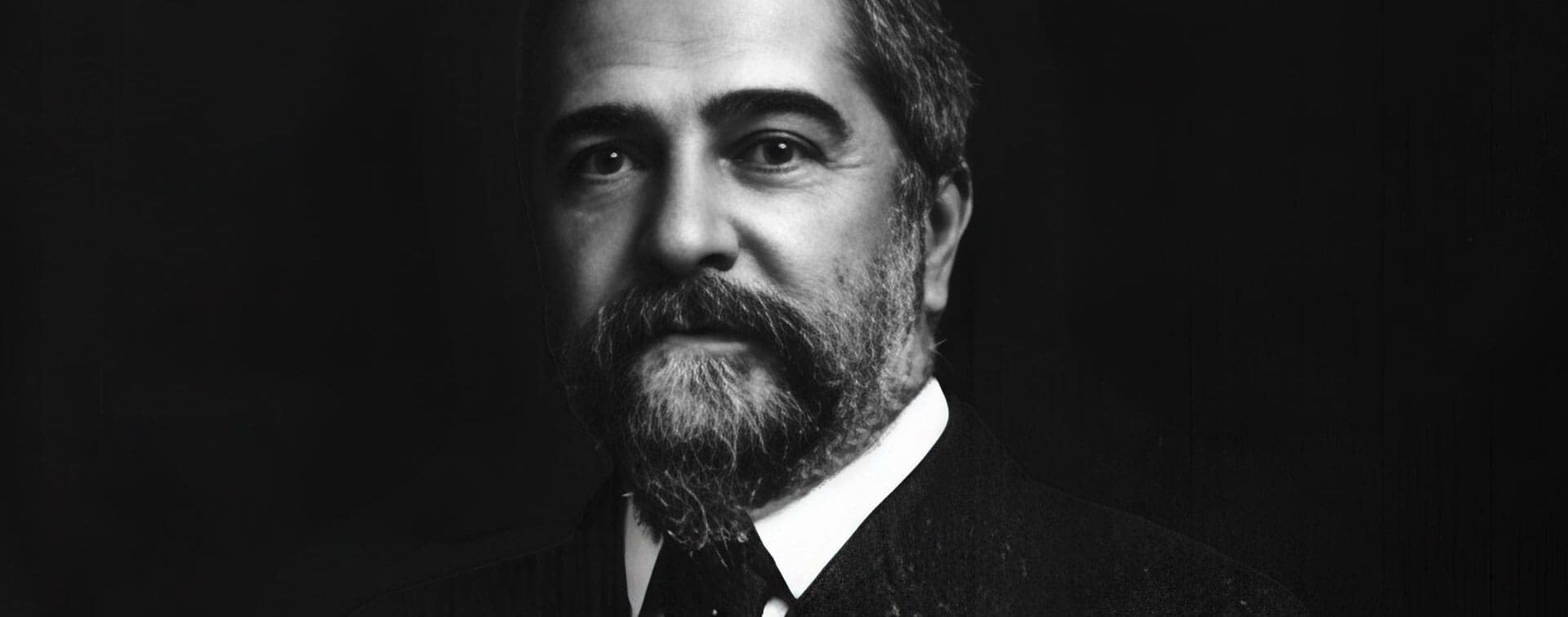Louis Comfort Tiffany: A Quest of Beauty in Glass and Light
I still remember the first time I saw The Medusa pendant through our Canon K35 camera lens. Just purchased from Sotheby’s and under our controlled studio lights, the century-old piece of art came alive. A mesmerizing tangle of gold tentacles and opals seemed to pulse with an inner glow, as if the mysterious jellyfish that inspired it were still drifting in some eternal sea. Being the first person to film Tiffany’s Medusa pendant in over a century was like capturing a fluid, living story—each tilt sent iridescent colors dancing; each close-up revealed new secrets quite literally etched in gold.
To help us slip back into Louis Comfort Tiffany’s world, we curated a playlist brimming with turn-of-the-century melodies. Old recordings crackled through our speakers, saturating every corner of our studio with a nostalgic vibe. At the request of the archives team, we captured The Medusa exactly as it was—untouched by modern cleaning or polishing—so every tarnish and faint scratch would remain part of its century-long journey. We thrive on this kind of immersive approach: setting the mood, embracing the imperfect patina of history, and letting those gnarly vibes fuel our creativity. When we inhabit a piece’s era it sparks a synergy that elevates, breathing new life into art once thought lost.
That single shoot ignited my curiosity for Louis Comfort Tiffany: Who was the man able to conjure such magic in glass and gold? Join me on a journey through Louis Comfort Tiffany’s world—from his restless youth to his cosmic dance with color. We’ll stroll his once-grand estate, Laurelton Hall, where stained glass lived alongside marble arches and lush gardens. We’ll explore how Louis Comfort Tiffany breathed artistry into electric lamps, once considered mundane novelties. And we’ll stand in awe of how Tiffany forever transformed the craft of stained glass. So take a step with me into his glow. This is more than history; it’s a pilgrimage into color and light.
Foreword by Chris “MUG5” Maguire
Estimated Reading Time: ~30 Minutes
“Color is to the eye what music is to the ear”
— Louis Comfort Tiffany
Louis Comfort Tiffany: An Artist Who Dared to Dream
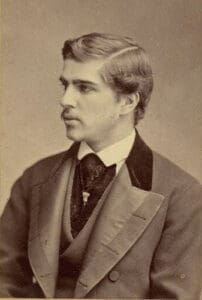
A glimpse of Louis Comfort Tiffany in his formative years—a visionary spark already shining through. Public domain portrait.
In the late 19th century, New York City rumbled with possibility—railroads, skyscrapers, fortunes made in a single deal. Amid all that clamor, Louis Comfort Tiffany emerged as a force of nature. Son of Charles Lewis Tiffany, the famed jeweler, young Louis could have steered the glittering Tiffany & Co. empire. Instead, he chased a more elusive treasure: the raw power of color.
Louis Comfort Tiffany once said, “Color is to the eye what music is to the ear,” and that philosophy became his manifesto. Tiffany’s wanderlust took him from Morocco’s tiled bazaars to Egypt’s golden deserts, imprinting his soul with every hue he encountered. By his mid-20s, Louis Comfort Tiffany had swapped oil paints for immersive interiors, teaming up with artists like Candace Wheeler to transform Victorian drawing rooms into vibrant canvases of stenciled walls, textured drapes, and glinting mosaics.
As Tiffany’s reputation grew among America’s high class, the White House came calling. President Chester Arthur invited Louis Comfort Tiffany to redecorate several rooms. The legendary Tiffany screen—stained glass, with peacock feathers and wisteria dazzled the Executive Mansion’s Entrance Hall. Though a later president removed it, Louis Comfort Tiffany’s legend lingered: Tiffany seemed to have an uncanny knack for capturing light itself.
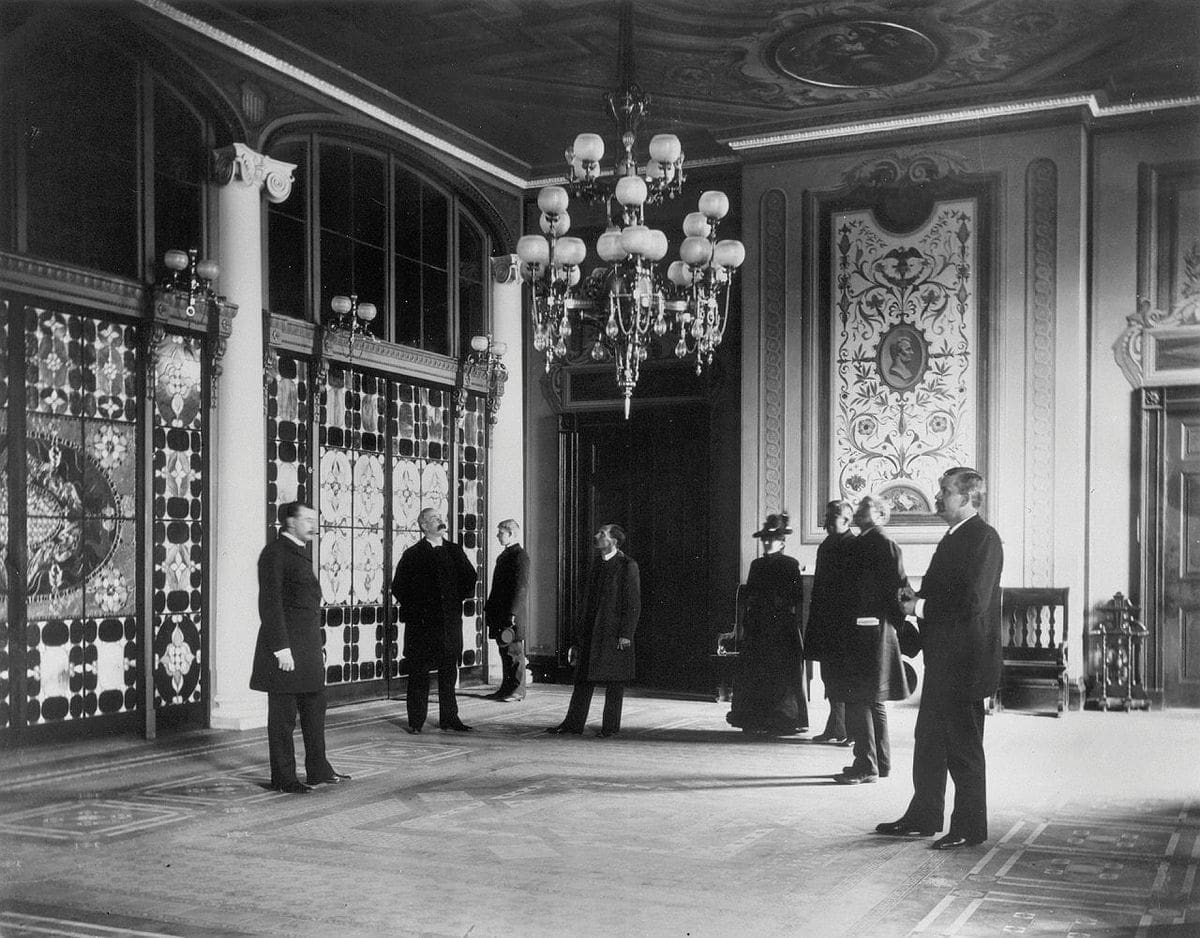
A rare glimpse of President Chester Arthur’s renovated Entrance Hall, showcasing Louis Comfort Tiffany’s striking glass panels. Image found on White House Historical Association and originally source from Library of Congress.
Louis Comfort Tiffany’s restlessness persisted. Painting, interior design, even lavish mosaics were a stepping stone toward something more primal. Louis Comfort Tiffany found his true domain when he ventured into opalescent glass. Breaking from Europe’s centuries-old stained glass methods, Tiffany partnered with chemists to create swirling, marbled panels in which colors fused directly in molten form. “Why paint on glass,” he mused, “when the glass itself can sing?”
In 1892, Tiffany built a workshop in Corona, Queens. Furnaces roared; molten glass glowed at 2,000 degrees. Here, he perfected two major breakthroughs:
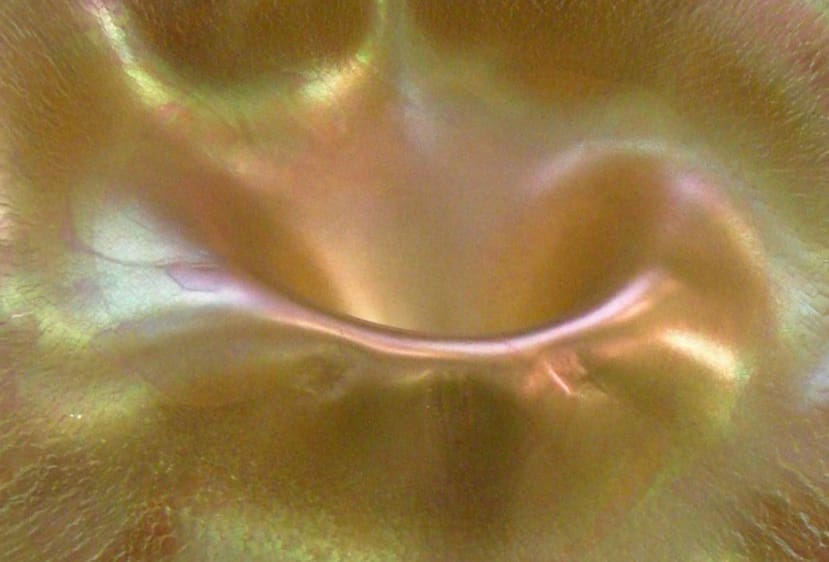
Golden iridescence captured in Louis Comfort Tiffany’s opalescent glass. Photo by Saliko. Original image under CC BY-SA 3.0.
- Opalescent Glass: Layered sheets combining milky white and vivid pigments to mimic clouds, rippling water, even flower petals.
- Favrile Glass: Inspired by the Old English word for “hand-wrought.” A patented process that yielded iridescent surfaces shimmering like butterfly wings.
These innovations let Tiffany “paint” with glass itself, swirling blues and greens into lifelike leaves, blending pinks and ambers for swirling sunsets. Soon after, museums like the Metropolitan Museum of Art began showcasing his Favrile vases—objects so luminous they seemed lit from within. Critics declared Louis Comfort Tiffany the reigning poet of molten color.
Stained Glass: When Light Becomes Story
By the 1890s, Tiffany’s stained glass windows were the talk of America’s gilded elite. He created monumental panels for churches, public buildings, and private mansions—each window a tapestry of dancing light. Through layered glass—drapery glass folded into waves, jewels fused to mimic dewdrops—he crafted vivid scenes: autumn forests, angelic figures, lily ponds shimmering under the moon.
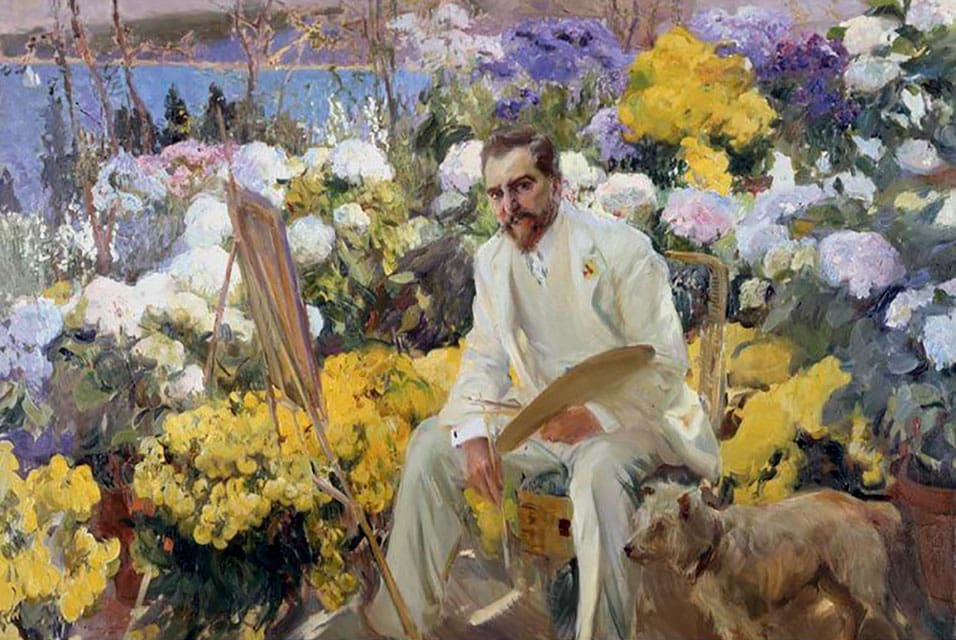
Louis Comfort Tiffany, painted en plein air by the Spanish master Joaquín Sorolla y Bastida—where color, light, and the spirit of creation collide. Public domain image via Wikimedia Commons.
Some windows were deeply spiritual, others simply celebratory of nature. But all were alive with color. Stand before one at sunrise, and it’s a gentle pastel glow. Return at midday, and the same window flashes in kaleidoscopic intensity. Tiffany loved this interplay of time and light. In his words, “Art should not be static—it should bloom anew with each passing hour.”
“Art should not be static—it should bloom anew with each passing hour.”
— Louis Comfort Tiffany<
The Tiffany Lamp: Illuminating the Ordinary, Enchanting the Night
Electric lighting was still an infant technology when Tiffany looked at Edison’s incandescent bulb and saw not utility but opportunity. Why settle for a naked bulb when you could cloak it in a garden of stained glass? By melding his copper-foil method—thin strips of copper wrapped around each glass shard—he fashioned intricate shades that told stories of dragonflies at dusk, wisteria blossoms cascading, or water lilies floating in jeweled ponds.
Suddenly, American parlors came alive at dusk. Turn on a Tiffany lamp, and the walls blossomed in color. Perhaps the most famous design, the Dragonfly Lamp, features shimmering insect wings, ruby cabochon eyes, and swirling water motifs. Each lamp was handmade by skilled artisans—including several women designers Tiffany called the “Tiffany Girls.” Hidden from the spotlight back then, they’re now recognized as co-creators of some of the finest lamps in art history.
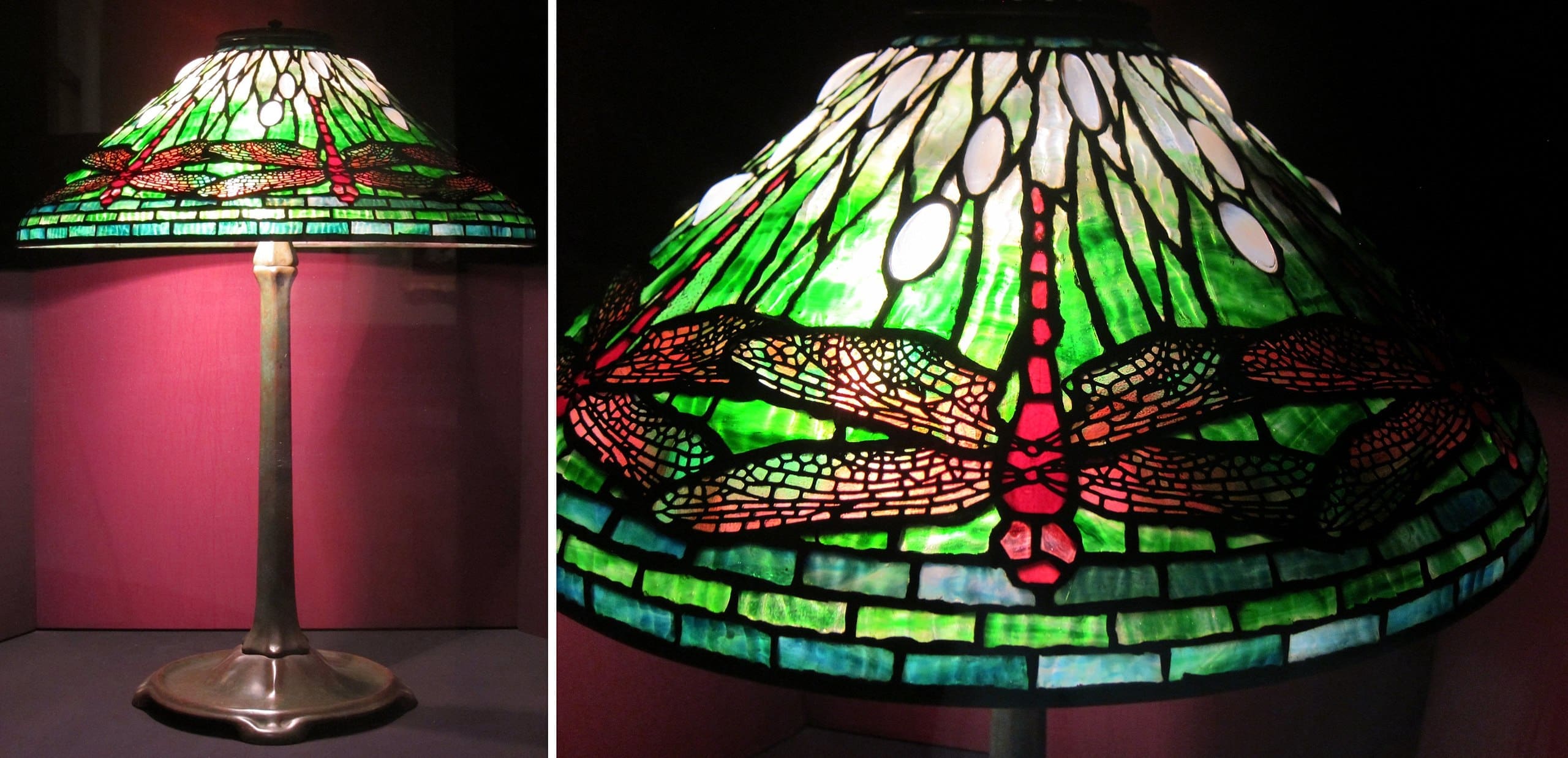
A mesmerizing Tiffany Studios “Dragonfly” lamp, alive with jewel-like greens and reds. Photo by Wmpearl, public domain.
“I found that glass could be more beautiful than anything I could achieve with paint.”
— Louis Comfort Tiffany
Medusa Emerges: A Jewel That Breathes Myth
Amid all his masterpieces, one object has gained near-mythic status: The Medusa pendant, crafted around 1902–1904. Louis Comfort Tiffany transformed the ghostly jellyfish into a writhing form of opals, garnets, and gold filigree tentacles. Less a necklace than a tiny sculpture, it debuted at the 1904 St. Louis World’s Fair, mesmerizing onlookers with its otherworldly glow. Then it disappeared into private collections.
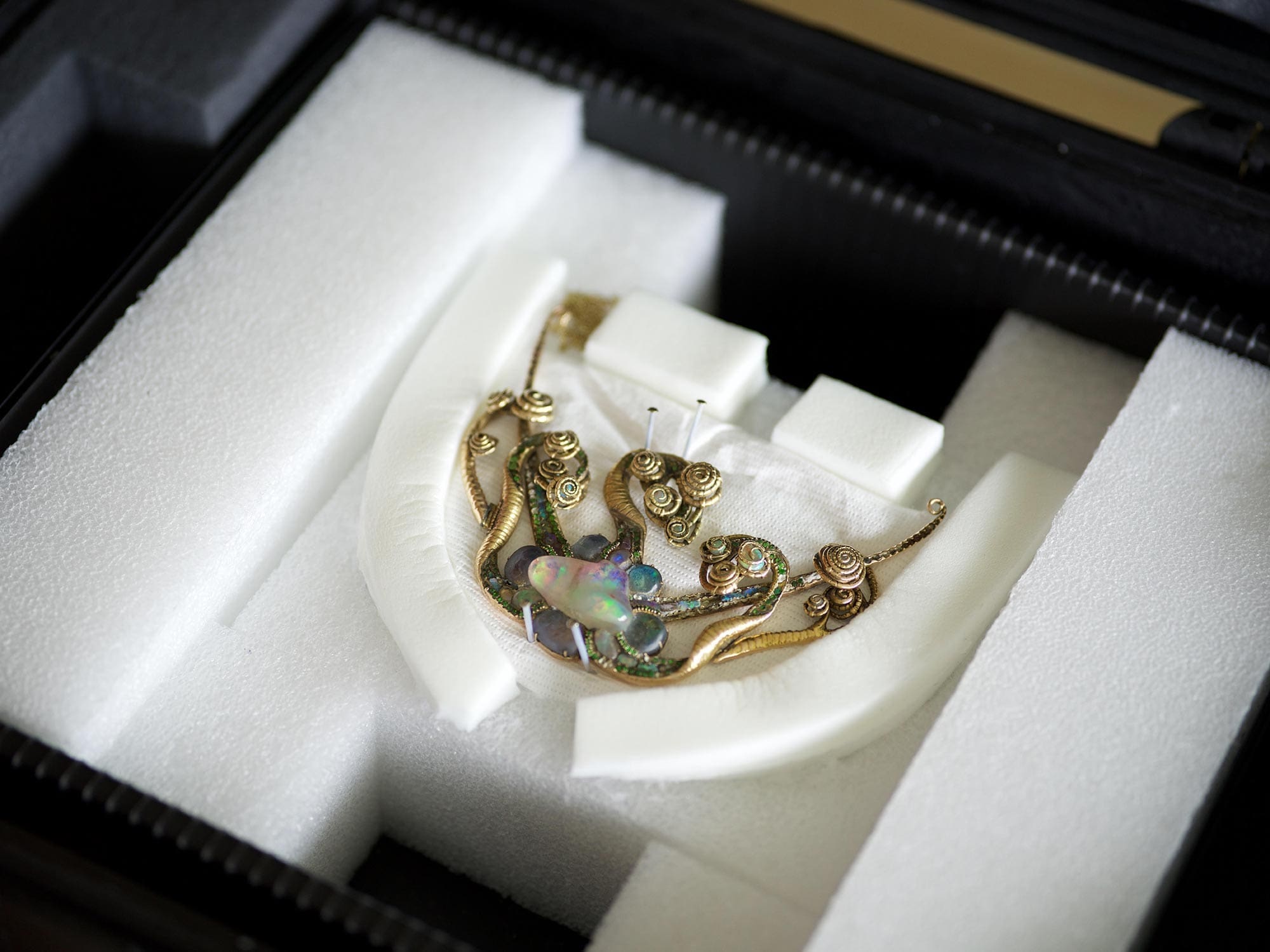
The first official image of Louis Comfort Tiffany’s legendary Medusa pendant after its acquisition by Tiffany & Co., resting in its archival case. Photo by Adrian Nina.
Fast-forward to 2021: The Medusa reappeared at Sotheby’s, igniting a bidding war and ultimately returning to Tiffany & Co. for a record-breaking sum. The pendant had essentially vanished from public view after its 1943 sale, making this a momentous rediscovery. Collectors and jewelry enthusiasts were stunned as the jewel shattered pre-sale expectations – ultimately selling for $3.65 million (over 18 times its high estimate) at Sotheby’s New York. This set a new world auction record for any Louis Comfort Tiffany piece.
Under camera lights, I watched it come alive again—every ripple of metal evoking some primeval sea. In that moment, I realized Tiffany never lost his painter’s soul—he just channeled it into gold and gemstone, letting light flow like water through precious opals.
Tiffany & Co. itself emerged as the buyer of The Medusa at that record-setting auction, securing the pendant for its own archives. Recognizing its significance, Tiffany wasted no time showcasing the treasure in its newly renovated Fifth Avenue flagship store (The Landmark). On the main floor, two side-by-side vitrines now display the storied 128-carat Tiffany Diamond and The Medusa pendant – a pairing of Tiffany’s most prestigious treasures. This Louis Comfort Tiffany design has been given pride of place, inviting visitors to experience a piece of jewelry history up close.
By putting The Medusa on public view in a retail setting, Tiffany has effectively transformed part of its flagship into a mini-museum, underscoring the house’s commitment to celebrating its heritage in the modern era.
Beyond the New York store, Tiffany & Co. has been reintroducing The Medusa to global audiences through special exhibitions. In April 2023, the company launched “Tiffany Wonder” – an immersive showcase in Tokyo celebrating the brand’s 185-year history. Among the hundreds of archival objects on display, The Medusa pendant stood out as a centerpiece. Vogue Singapore called it the “indisputable star” of the exhibition.
For many visitors, these exhibitions offered the first opportunity to see the long-hidden jewel in person – a triumphant public comeback for The Medusa after years in private hands. The attention it garnered reflects a broader cultural fascination with heritage jewelry and Tiffany’s efforts to share its most illustrious creations with new generations.
Contemporary Interpretations in Jewelry and Culture
Today, The Medusa pendant is celebrated not just as a historic piece, but as a work of art that resonates with contemporary tastes. The design itself is an object of intrigue: it features a swirling motif inspired by a budding jellyfish in its “medusa” stage of life. A cluster of opals forms the body of the creature, while undulating tentacles of gold (adorned with demantoid garnets and sapphires) trail below, capturing the fluid, otherworldly beauty of undersea life.
Fashion and culture media have latched onto this story: major outlets have run features on The Medusa, and it’s become a talking point in discussions about the revival of Art Nouveau aesthetics in modern jewelry. Town & Country described the pendant’s “exquisite strangeness” as a perfect reflection of Louis Comfort Tiffany’s artistic spirit.
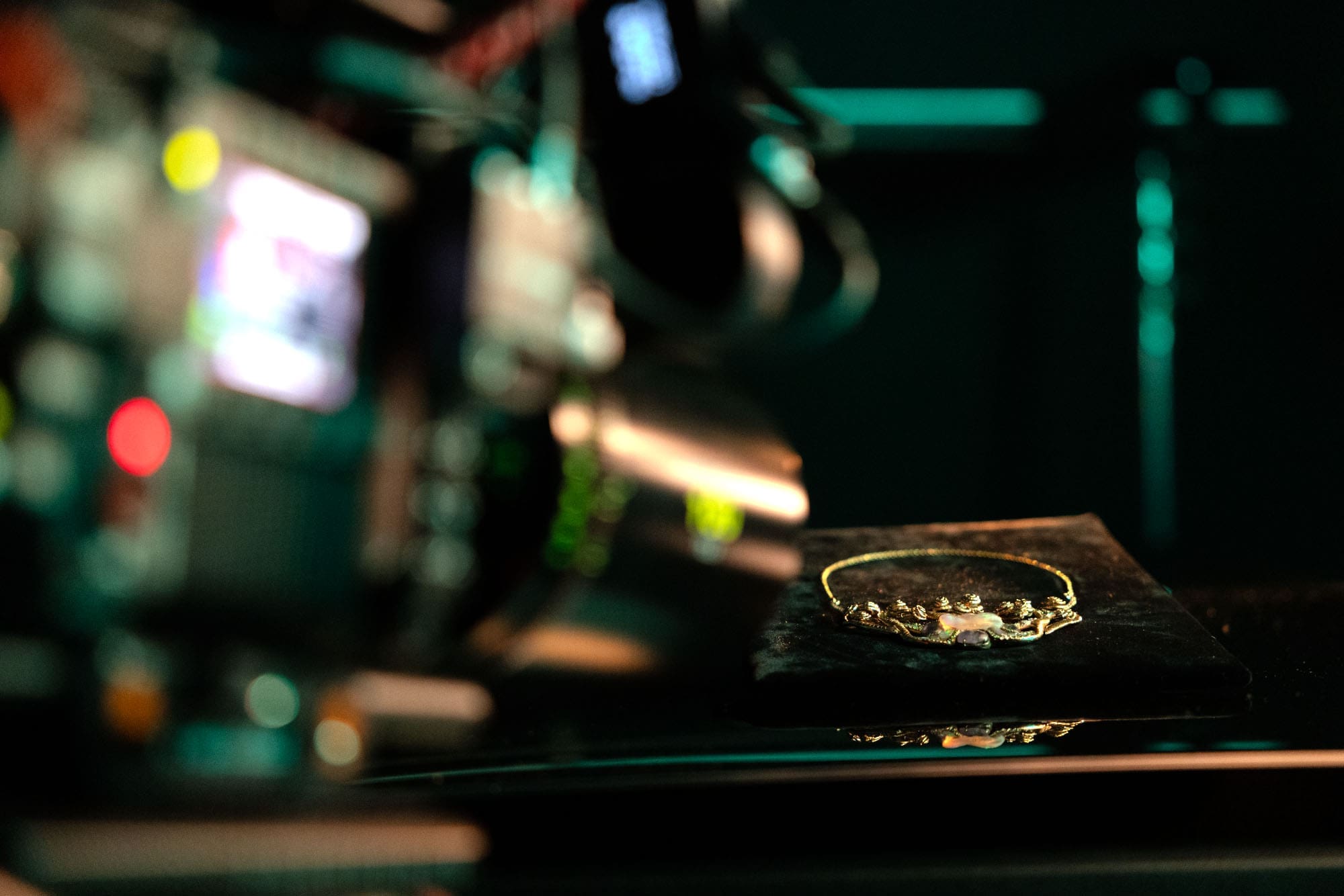
A cinematic moment: The Medusa pendant under the lens, its opals flickering like trapped fire. Captured in the glow of production lights as we documented its return to the Tiffany archives.
Under Tiffany & Co.’s current stewardship, The Medusa has been woven deeply into the brand’s modern identity. Company historians frequently spotlight the pendant alongside the Tiffany Diamond, eager to elevate this once-forgotten masterpiece to legendary status. Jewelry historian Marion Fasel recently noted that while the Tiffany Diamond is world-famous, The Medusa’s history remains largely untold—but that is rapidly changing.
Tiffany has also integrated The Medusa into its exclusive high-jewelry presentations. During the unveiling of the 2023 Blue Book collection, VIP clients and press were invited to admire the original pendant up close—further cementing its status as an ambassador of the Tiffany archives.
An Evolving Legacy
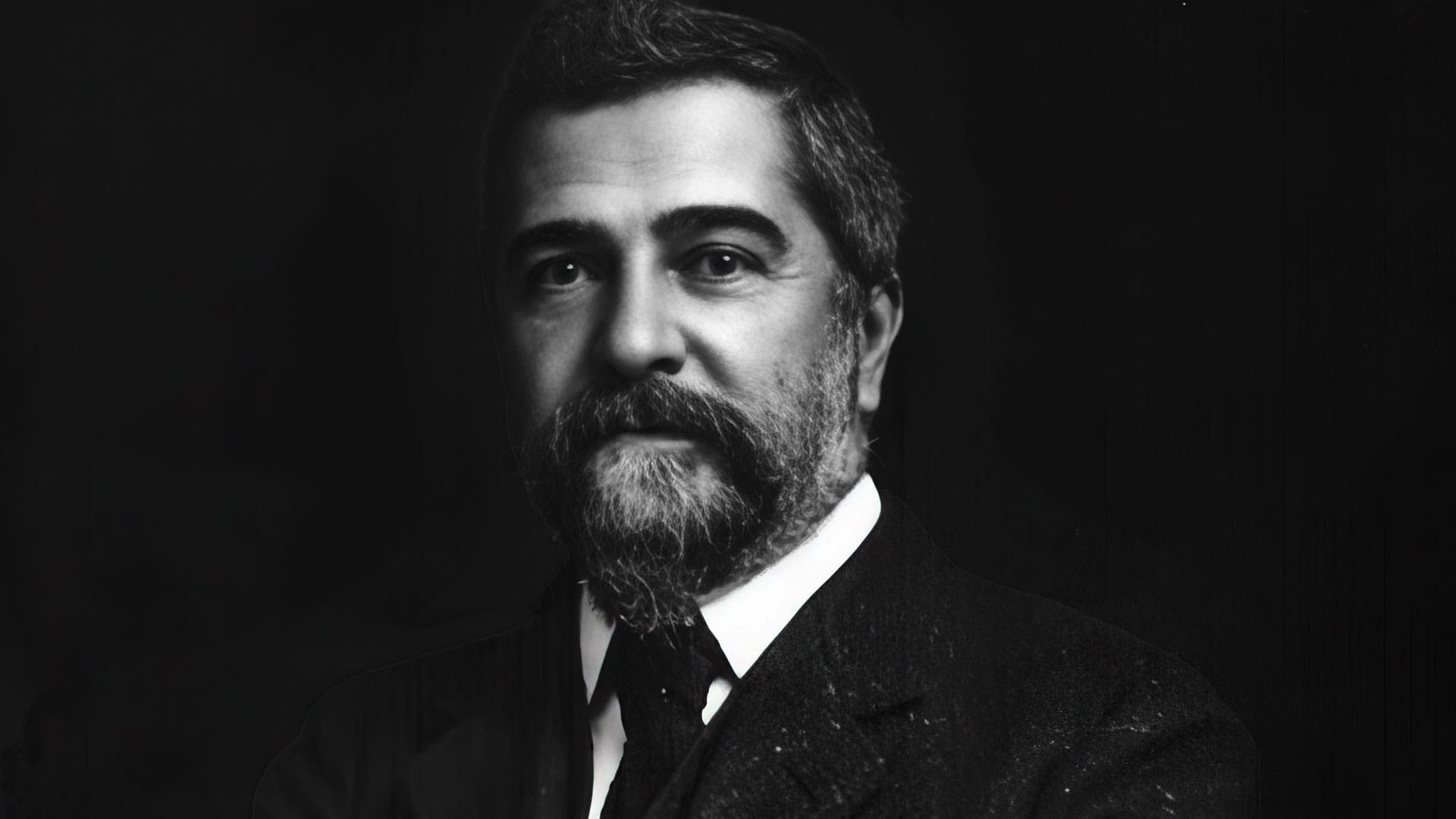
A newly upscaled and relit portrait of Louis Comfort Tiffany, originally from a 1908 photograph. Artistic enhancements by MUG5, based on the Wikimedia Commons source.
In just a few years, The Medusa pendant’s legacy has evolved from a footnote in Tiffany’s history to a focal point of its public image. Its journey—from dazzling crowds at the 1904 World’s Fair, to decades of quiet obscurity, to its record-breaking auction and return home—captures the imagination of historians and jewelry lovers alike. Now proudly enshrined at Tiffany’s Fifth Avenue flagship and celebrated in exhibitions worldwide, The Medusa has firmly reentered the cultural conversation.
As one expert observed, now that the pendant is finally on display “for all to see,” its legend will only continue to grow, much like that of the Tiffany Diamond itself. By placing it in the spotlight, Tiffany & Co. has ensured that this storied jewel will remain a symbol of the house’s artistic legacy for generations to come.
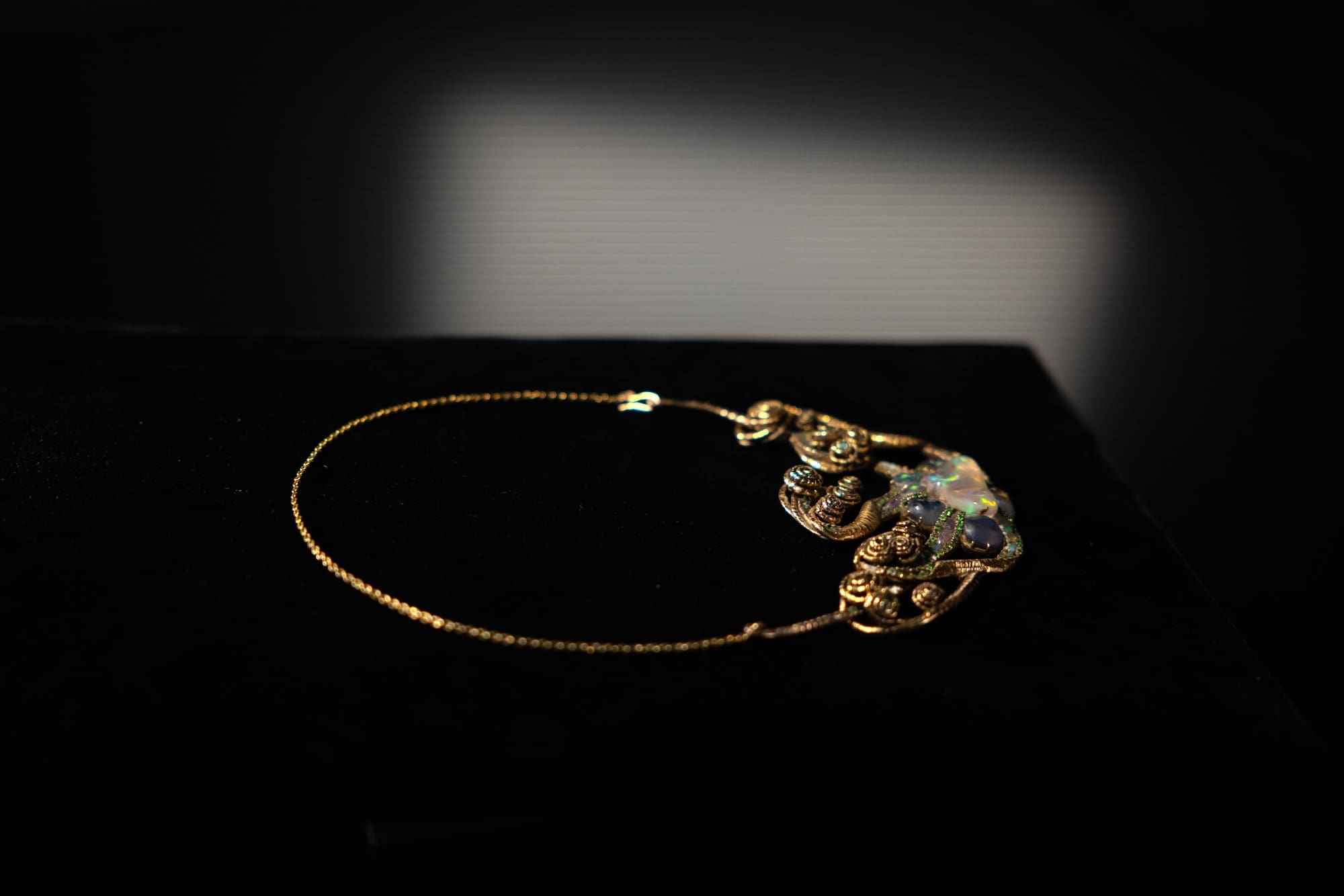
A moment suspended in time: The Medusa pendant, its opals glowing like captured fire, resting against the darkness. This Louis Comfort Tiffany masterpiece, lost for a century, now reclaims its legend. Photo by Adrian Nina.
Laurelton Hall: A Mansion as a Living Canvas
By the turn of the century, Louis Comfort Tiffany had conquered glass, interiors, and jewelry. But he wanted more. He was done creating art instead Louis Comfort Tiffany wanted to live inside it. And so, Laurelton Hall was born.
Completed in 1905 on a 600-acre estate overlooking Cold Spring Harbor on Long Island, Laurelton Hall was Tiffany’s most personal and immersive creation. Unlike his commissions for wealthy clients, where he had to meet their tastes, this was a world shaped entirely by his own vision. He called it his favorite child, a place where art and nature blurred into one. It was a philosophy materialized in brick, glass, and stone.
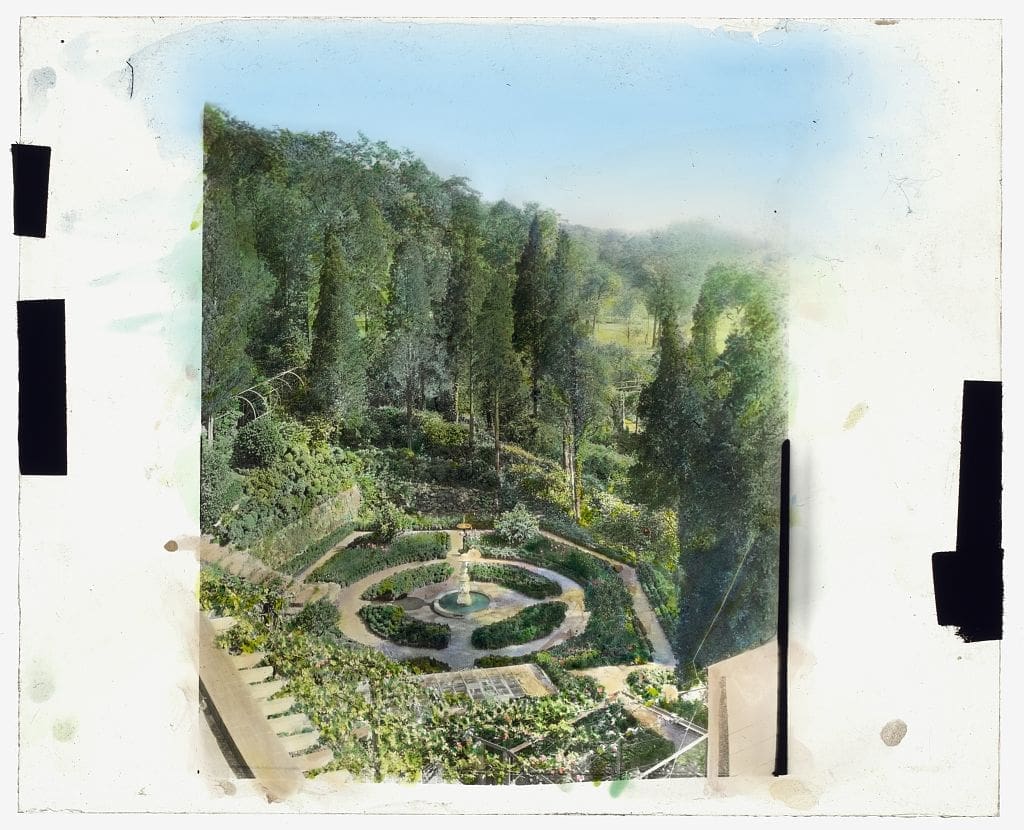
A rare, hand-colored image of the terraced gardens at Louis Comfort Tiffany’s Laurelton Hall, where nature and artistry intertwined. Image courtesy of the Library of Congress.
The Architecture: A Fusion of Worlds
Laurelton Hall was unlike anything else built during America’s Gilded Age. While his contemporaries erected French châteaux and English manor houses, Tiffany turned eastward. Drawing inspiration from Islamic architecture, Byzantine mosaics, and the exoticism of his global travels, he created a mansion that felt like a fusion of Morocco, Venice, and Persia—yet still wholly American.
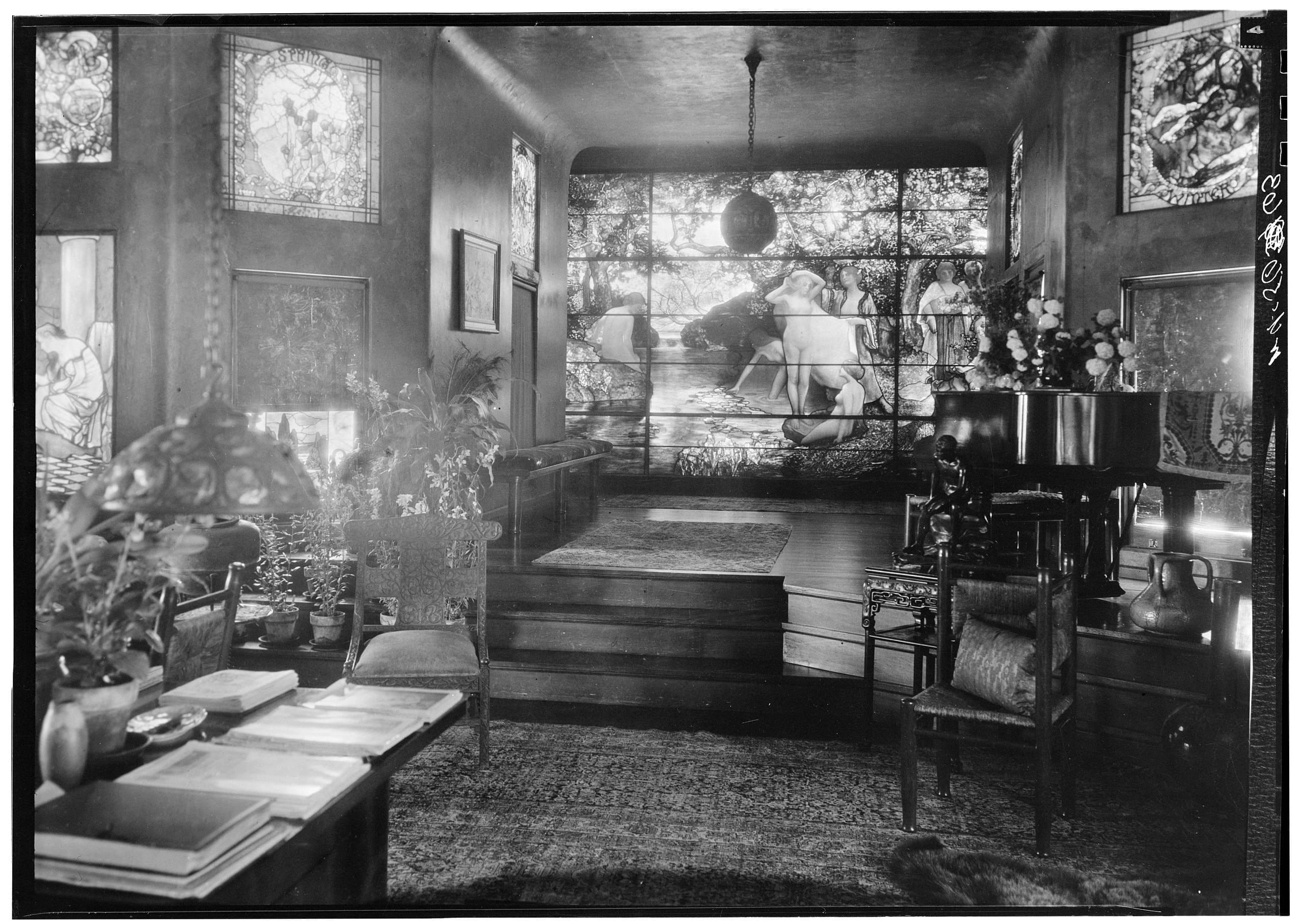
Inside Louis Comfort Tiffany’s Laurelton Hall, where stained glass transformed light into art. The grand window infused the space with a dreamlike glow. Photo from the Historic American Buildings Survey, via Wikimedia Commons.
The estate’s 84 rooms unfolded like an artist’s palette: vast, open spaces punctuated by stained glass windows that bathed the interiors in shifting hues. Islamic horseshoe arches framed the Great Hall, where a massive Tiffany glass window filtered golden light across inlaid wooden floors. The loggia, inspired by Venetian palazzos, opened onto terraces cascading toward the bay, blending indoors and outdoors in a way that prefigured modernist architecture.
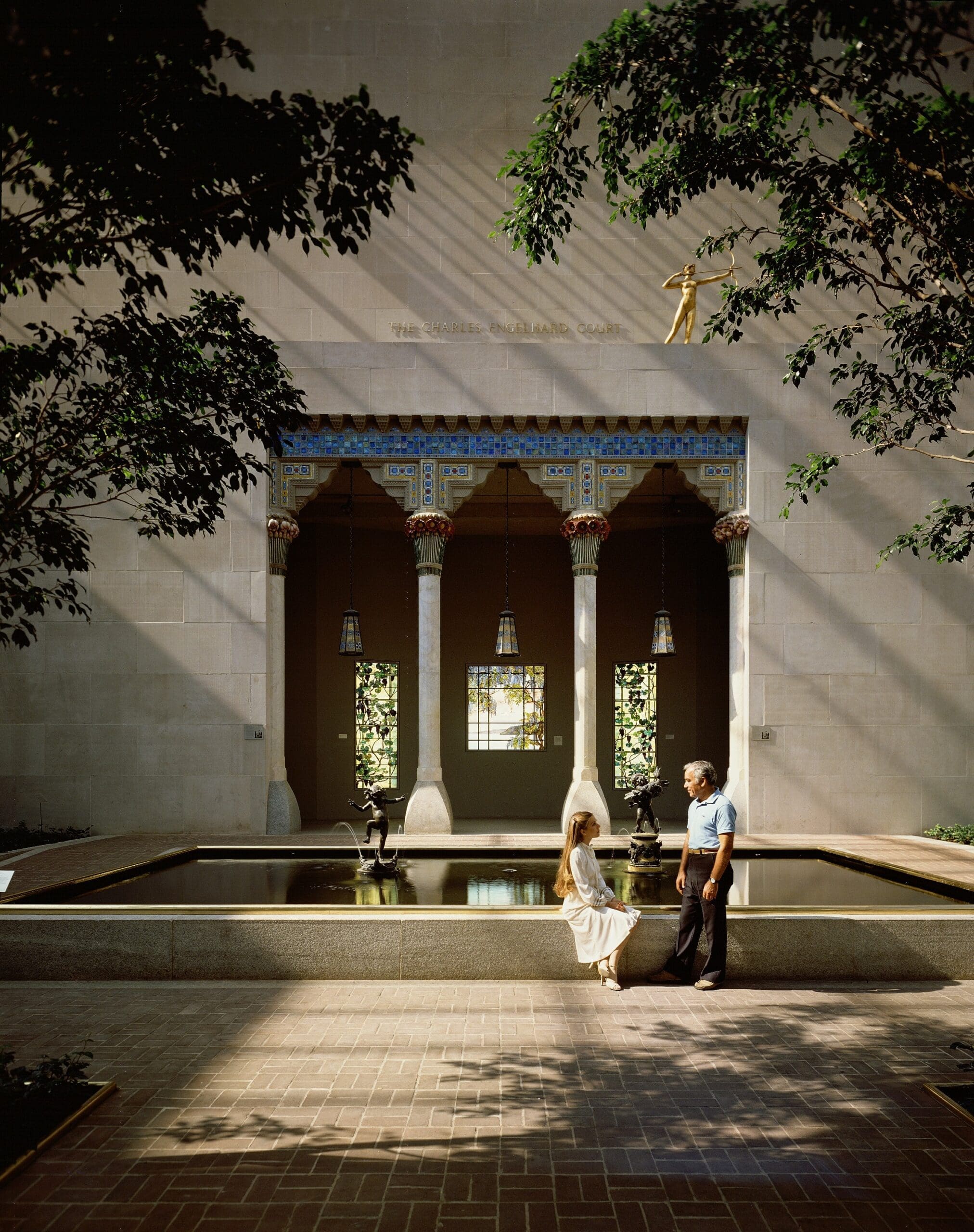
The grandeur of Louis Comfort Tiffany’s Laurelton Hall lives on—its arches now standing in The Met’s Charles Engelhard Court. A fragment of history, a window into a lost masterpiece. Image via Wikimedia Commons.
The Interiors: A Symphony of Color and Light
Inside, every surface pulsed with ornamentation. The walls were layered in elaborate stencils and mosaics, the ceilings hand-carved with intricate patterns, and the furniture custom-designed to harmonize with the space. There were no blank canvases at Laurelton Hall—every inch was infused with intention.
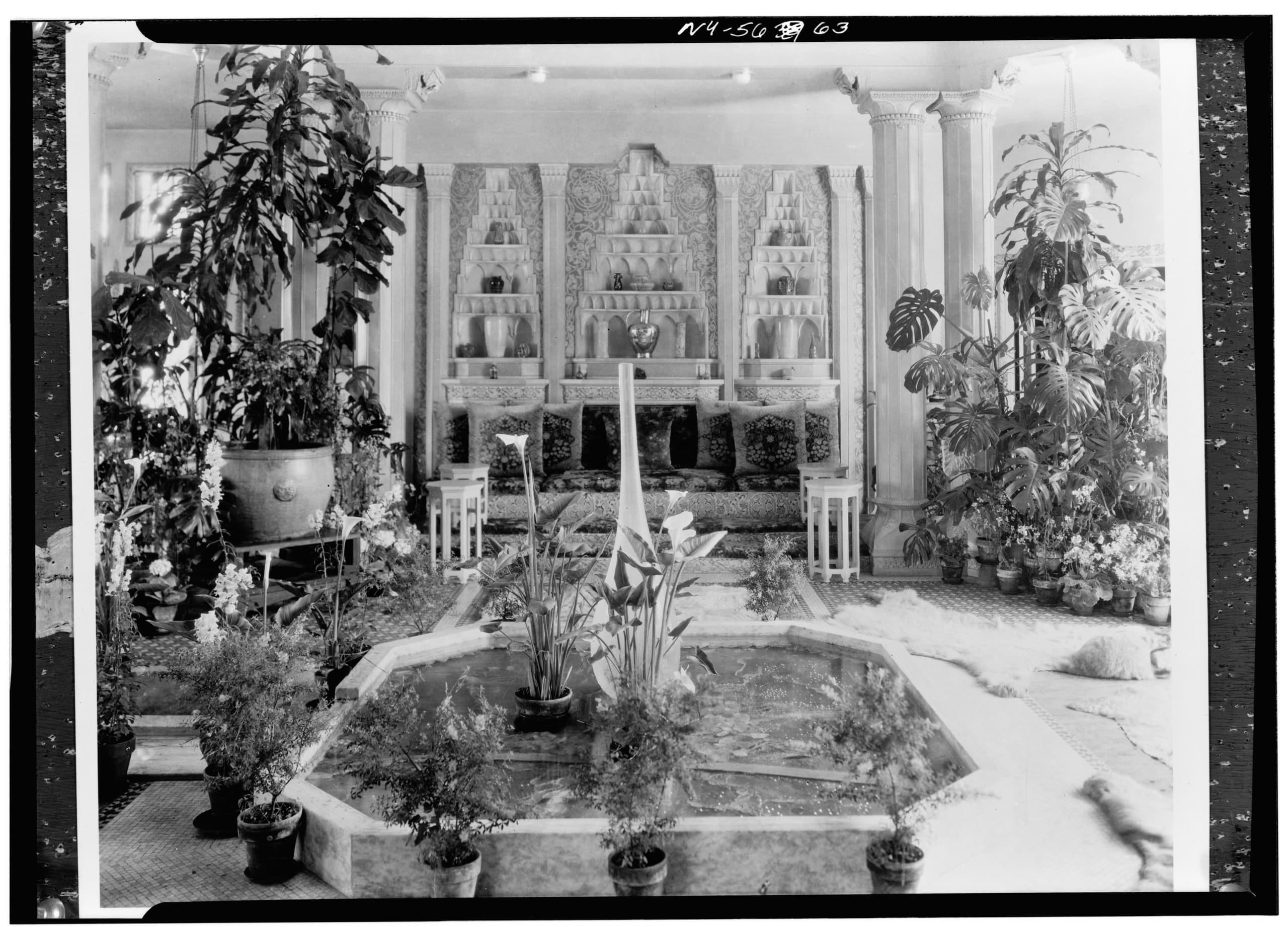
A glimpse into the breathtaking Central Court of Louis Comfort Tiffany’s Laurelton Hall—where a marble fountain, lush plants, and intricate vases transformed architecture into art. Photo by David Aronow, via Wikimedia Commons, part of the Historic American Buildings Survey.
- The Fountain Court: At the heart of the home, a mosaic-lined courtyard shimmered in shades of blue and gold, with a central fountain that seemed to hum with life, its waters reflecting the intricate patterns above.
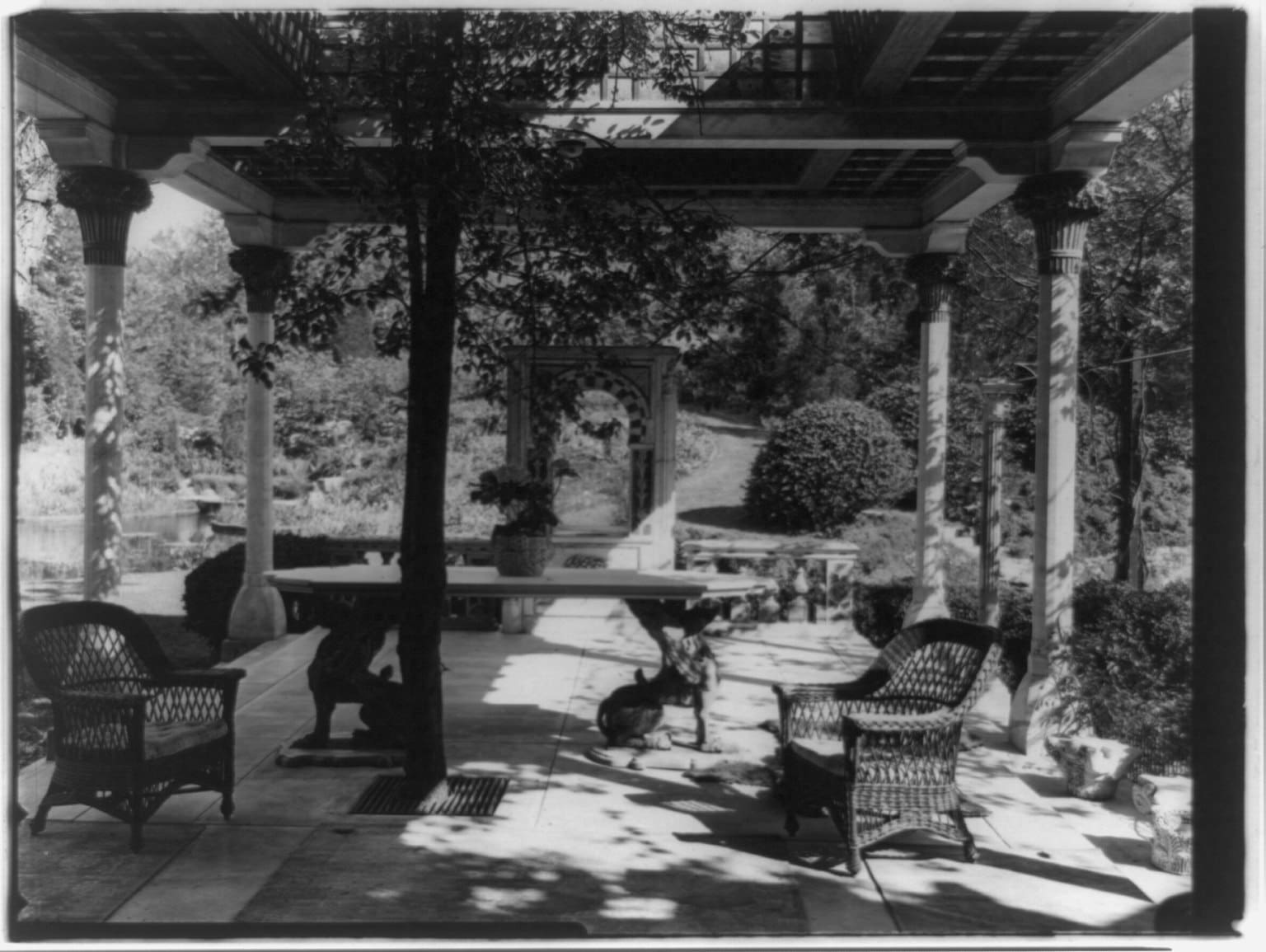
The loggia at Louis Comfort Tiffany’s Laurelton Hall—a space where art and nature intertwined beneath Moorish-inspired columns, overlooking lush gardens. Photo from the Library of Congress, via Wikimedia Commons.
- The Loggia: This open-air corridor, lined with delicately carved columns, led guests toward lush gardens and offered sweeping views of the harbor. Tiffany saw it as a place of transition—where architecture met nature in seamless dialogue.
- The Breakfast Room: Designed to catch the morning light, this space was adorned with Favrile glass lamps, shimmering like captured sunrise, and windows that turned every meal into a living watercolor.
But the most sacred space in the entire estate wasn’t a room—it was a chapel.
The Chapel: A Sacred Jewel from the 1893 World’s Fair
Among Tiffany’s greatest achievements had been his Byzantine-styled chapel for the 1893 Chicago World’s Fair—a staggering display of mosaic artistry, with walls encrusted in iridescent glass and a soaring domed ceiling speckled with gold. After the exposition ended, most temporary pavilions were dismantled and lost to time. But Tiffany refused to let his masterpiece disappear. He painstakingly salvaged its pieces, had them transported to Long Island, and rebuilt the entire chapel inside Laurelton Hall, where it became a personal sanctuary.
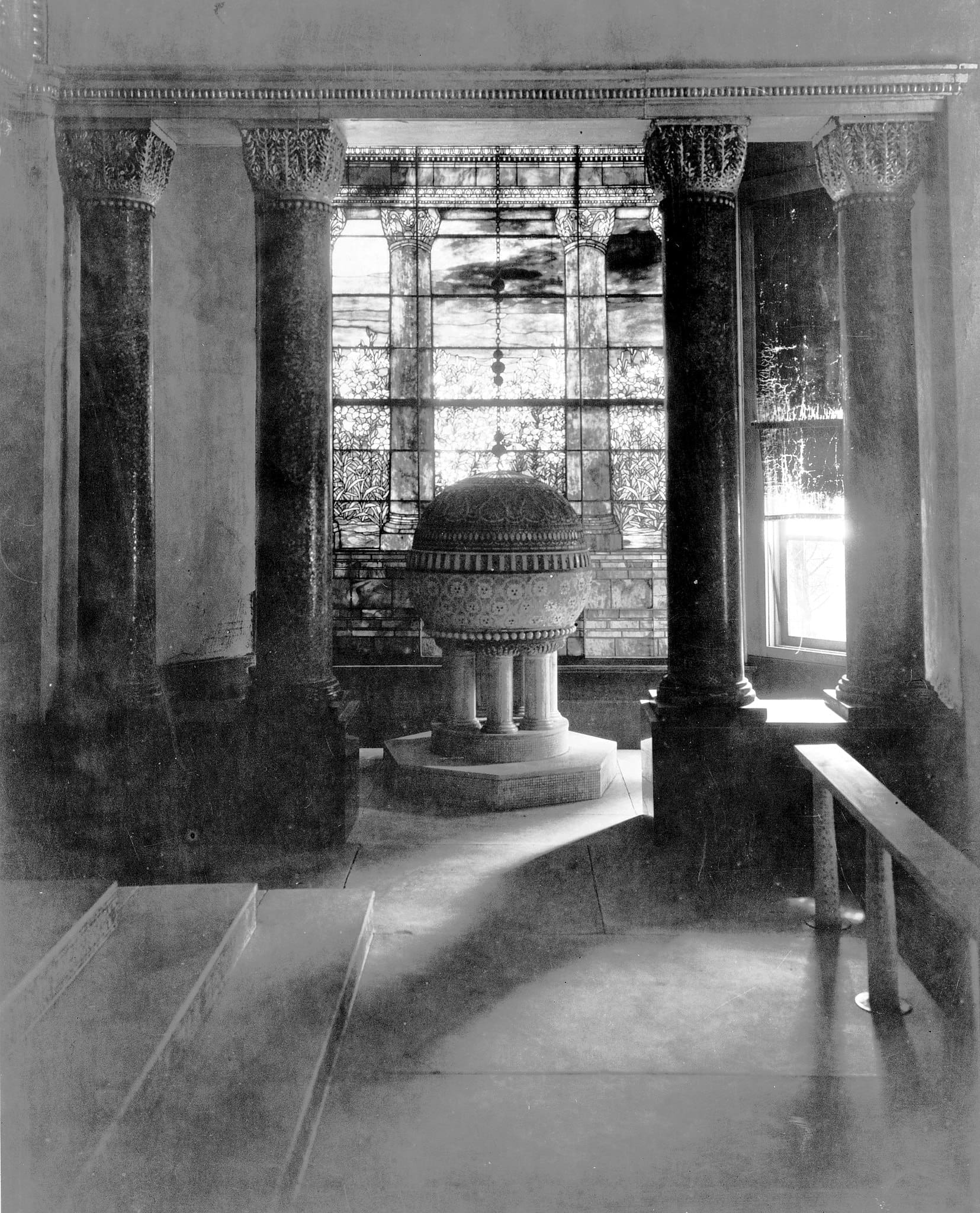
A glimpse into the luminous Tiffany Chapel, where stained glass and Byzantine-inspired columns create a sacred atmosphere of light and reflection. Photo from the Historic American Buildings Survey, via Wikimedia Commons.
One can only imagine what it felt like to step into that space—sunlight filtering through jewel-toned glass, glimmering across the intricate mosaic altar, reflecting on the chapel’s glass chandeliers that seemed to hold their own internal fire. Tiffany had not only preserved this masterpiece, but made it the spiritual center of his personal artistic utopia.
The Gardens: Nature as Art
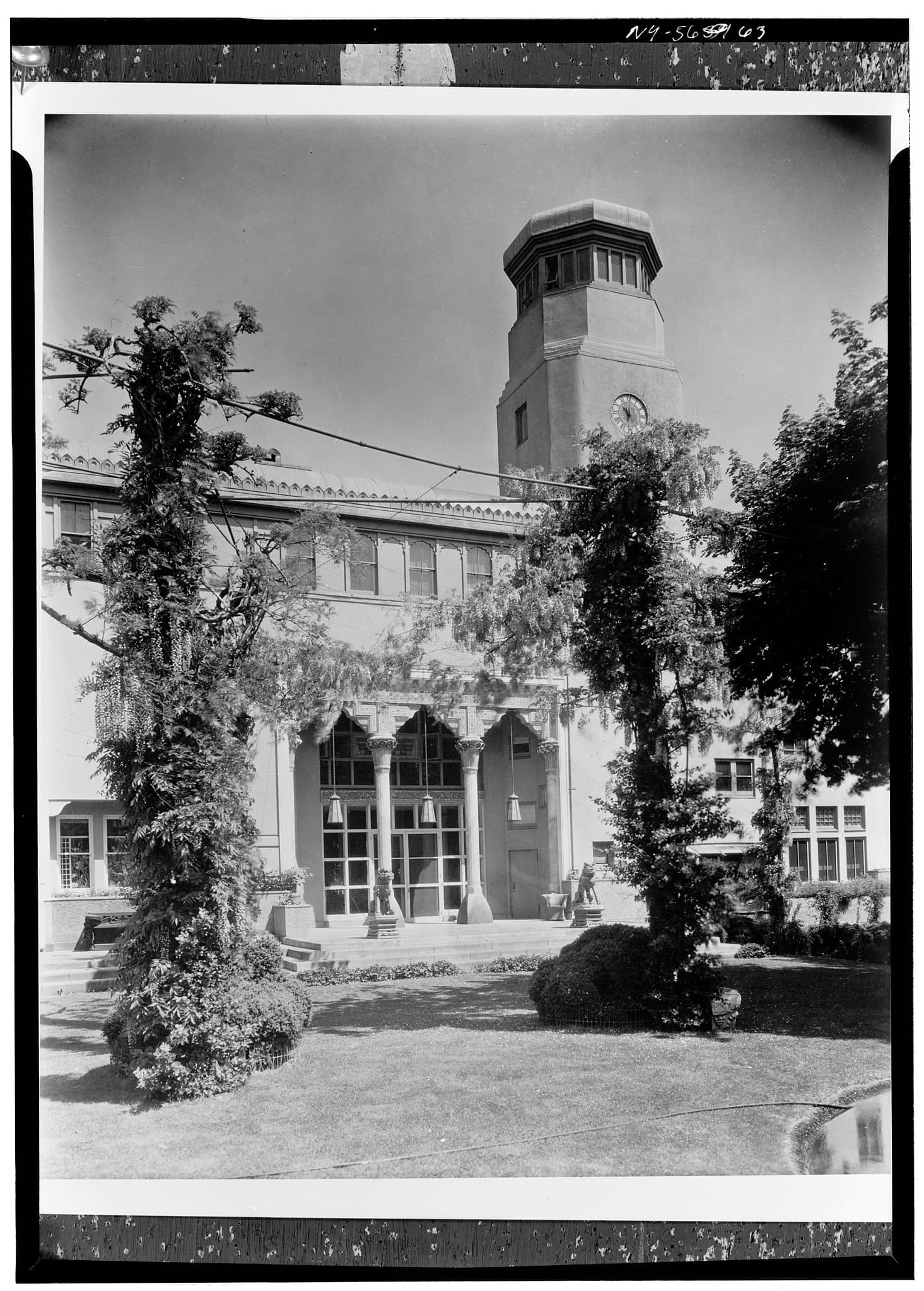
A rare glimpse of the exterior of Louis Comfort Tiffany’s Laurelton Hall, featuring grand Moorish-style columns, cascading greenery, and its distinctive clock tower. A vision of art and architecture intertwined. Photo from the Historic American Buildings Survey, via Wikimedia Commons.
If Laurelton Hall’s interiors were a testament to craftsmanship, its gardens were a love letter to nature. Tiffany believed that landscapes should be composed like paintings, with seasonal colors shifting like brushstrokes. He carefully curated a botanical wonderland:
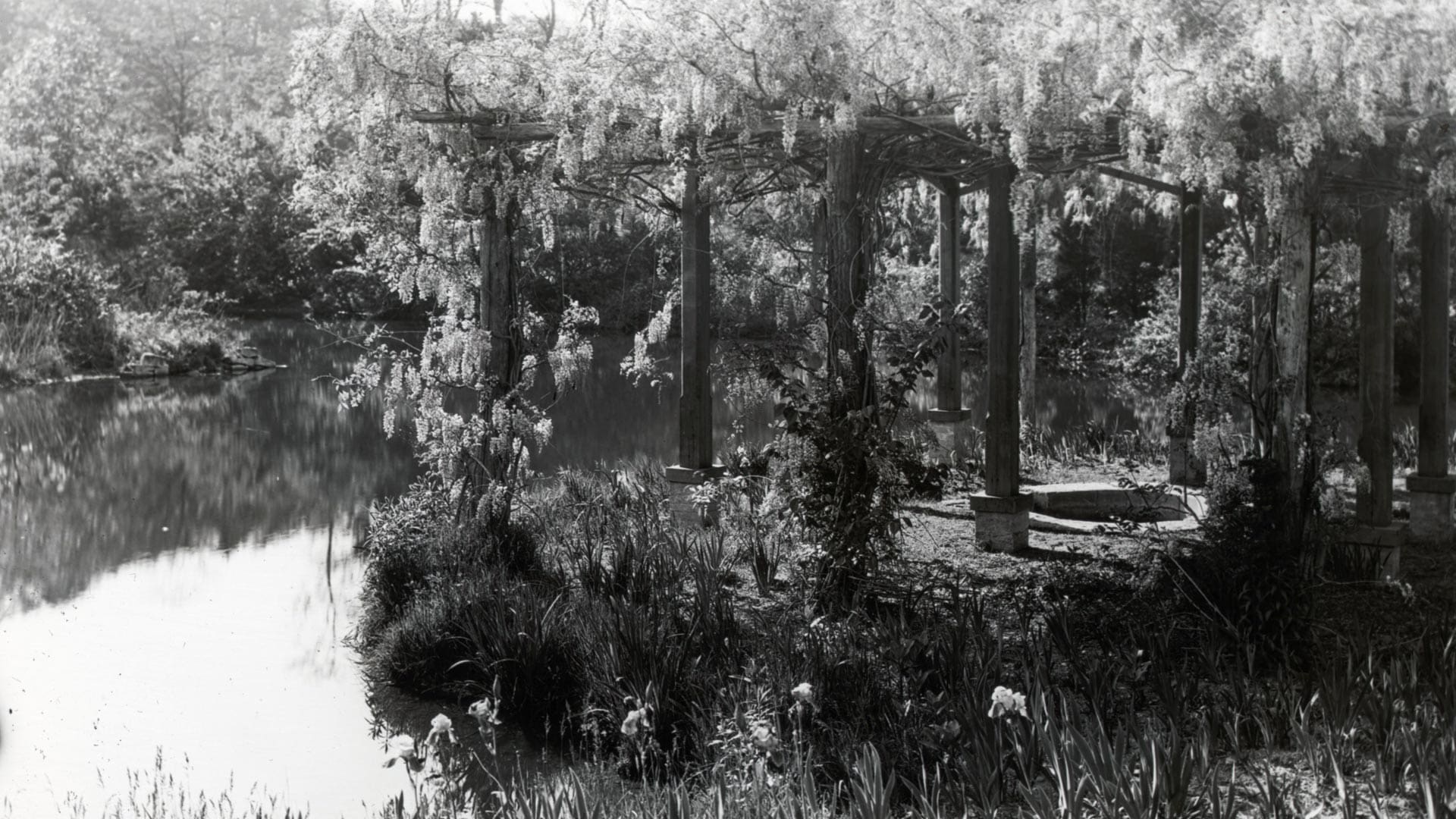
A glimpse into the enchanting wisteria pergola at Louis Comfort Tiffany’s Laurelton Hall—a sanctuary where nature and artistry intertwined. Photo from the Library of Congress, via Wikimedia Commons.
- Terraced gardens descending toward the water, overflowing with wisteria, magnolia, and Japanese maples.
- A sunken garden surrounded by trellises covered in climbing roses, designed as a hidden retreat.
- A pergola filled with exotic orchids, where Tiffany would often sketch and find inspiration.
- Meandering pathways lined with Favrile glass lanterns, glowing softly as dusk fell.
Visitors described walking through the gardens at sunset as entering a dreamscape, where every vista was framed like a painting, every tree and flower a deliberate brushstroke in Tiffany’s grandest masterpiece.
Laurelton Hall Becomes an Artist’s Haven
Unlike many of his peers who jealously guarded their estates, Tiffany saw Laurelton Hall as a place to nurture future artists. In 1918, he turned the mansion into The Louis Comfort Tiffany Foundation, an artist-in-residence program where young painters, sculptors, and designers could live, create, and immerse themselves in his world.
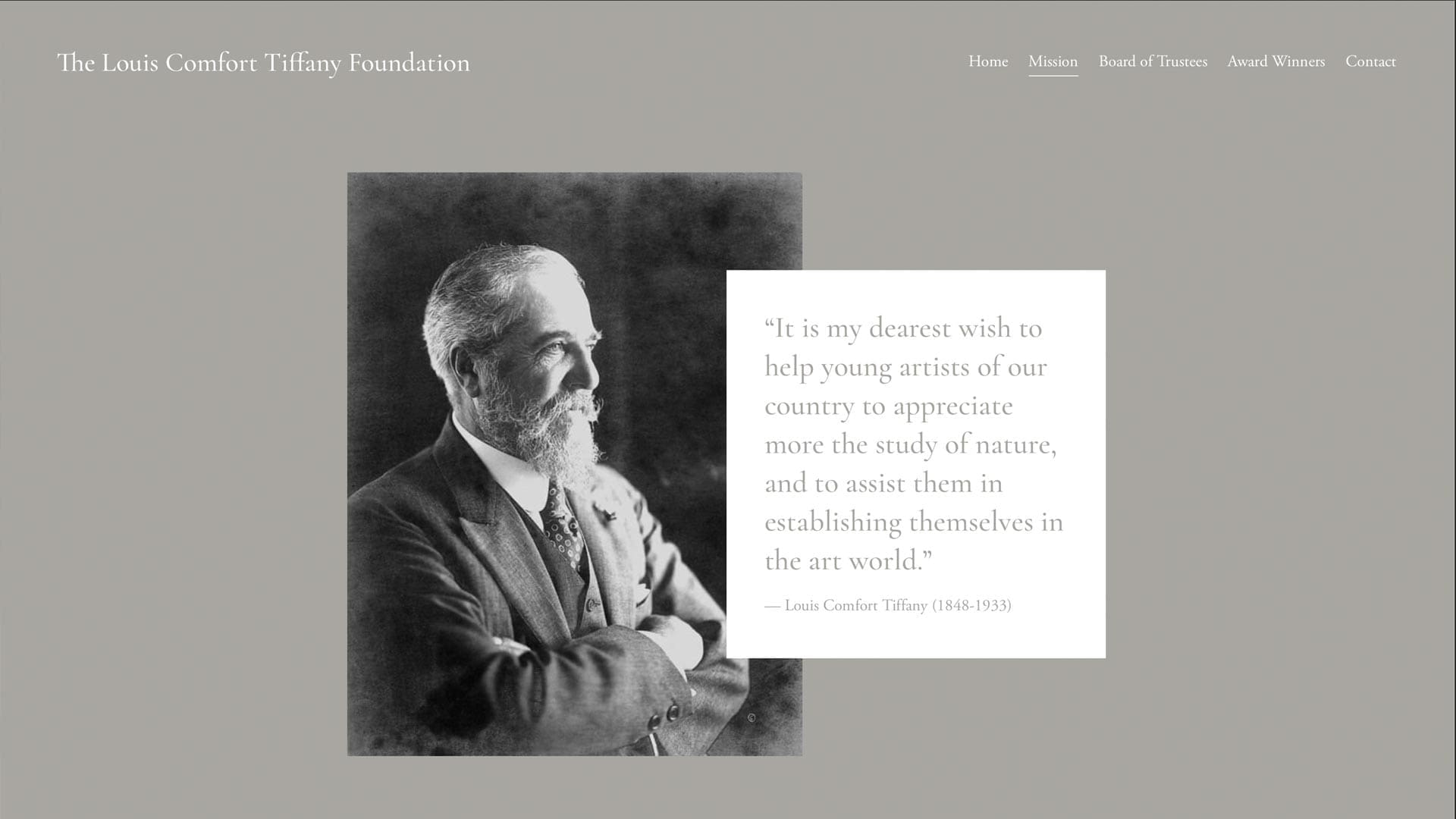
A glimpse into The Louis Comfort Tiffany Foundation’s mission, preserving Tiffany’s legacy by supporting emerging artists. The foundation continues his vision of merging art, nature, and innovation.
Imagine being a young artist, waking up in a room filled with colored light from Tiffany windows, sketching in the gardens where Tiffany himself once sought inspiration, dining in a hall glowing with Favrile glass chandeliers. It was a living museum of creativity, and Tiffany wanted to pass that vision forward.
Yet, for all its beauty, Laurelton Hall was not destined to last. Tiffany died in 1933, and over time, the foundation struggled to maintain the massive estate. Then, in 1957, catastrophe struck—a devastating fire swept through the property, reducing much of it to ruins.
Many of Tiffany’s finest works, including hand-carved ceilings and priceless glass panels, were lost to the flames. What remained—scorched mosaics, charred beams, shattered remnants of once-luminous windows—became artifacts of a vanished world.
The Fragments That Survive
While the fire destroyed the physical structure, it could not erase Laurelton Hall’s legacy. Key fragments were salvaged and now reside at The Charles Hosmer Morse Museum of American Art in Florida, where visitors can still glimpse:
“It can be argued that Laurelton Hall, completed in 1905, was Tiffany’s greatest achievement.”
— Charles Hosmer Morse Museum
- The reassembled chapel, glowing once more under museum lights.
- Original Favrile glass windows, their shifting hues whispering stories of a lost utopia.
- Fragments of Tiffany’s mosaic columns and furniture, preserving the textures of his dreamscape.
Today, standing before these salvaged pieces, one can almost reconstruct the grandeur that once was—a mansion not built for status, but as an artist’s ultimate sanctuary.
More than a home, more than an architectural marvel, Laurelton Hall was Tiffany’s life’s work in its purest form. It was a place where glass became light, walls became canvases, and nature became art. Though the flames took the structure, its spirit lingers in every Tiffany window that still catches the sun, in every ripple of Favrile glass, in every artist who seeks to merge craft and vision.
In the grand story of Louis Comfort Tiffany, Laurelton Hall was his cathedral of beauty, a fleeting yet eternal reminder that art is not just something to be admired—it is something to be lived.
Louis Comfort Tiffany: The Painter Who Saw Light Differently
Before he revolutionized stained glass—before the Tiffany lamps and the opalescent windows that turned sunlight into symphonies—Louis Comfort Tiffany was a painter. It’s easy to forget—his glasswork became so iconic that his beginnings with brush and canvas are often overshadowed. But it was painting that first taught Tiffany how to capture light, how to translate nature’s brilliance onto a surface, and how to see the world as an artist long before he ever shaped glass or designed a room.
In many ways, his early paintings are a glimpse into the mind of a restless creator—someone who was never satisfied with the limitations of a single medium, always searching for something more luminous, more immersive, more alive.
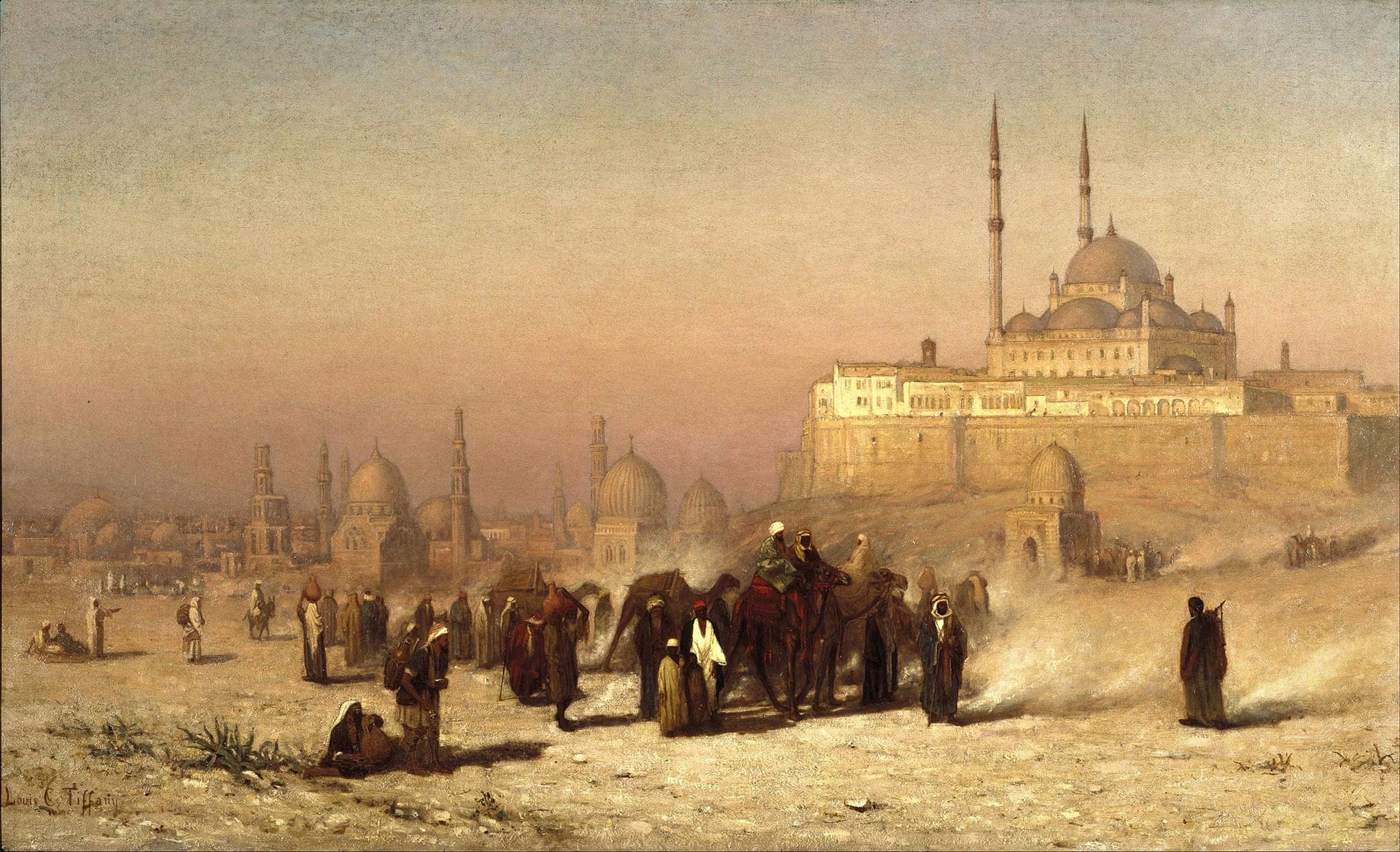
Louis Comfort Tiffany’s evocative painting, On the Way between Old and New Cairo, capturing the golden haze of Egypt, the grandeur of the Citadel Mosque, and the movement of travelers through the desert. Image via Wikimedia Commons.
A Young Artist with a World to See (1848–1870s)
Born into privilege as the son of Charles Lewis Tiffany, the founder of Tiffany & Co., young Louis was expected to inherit the family business. But business was not his calling—color was.
Rather than follow in his father’s footsteps, Tiffany studied painting at the National Academy of Design, training under George Inness, one of America’s greatest landscape painters. Inness was a disciple of the Hudson River School, a movement devoted to capturing the majesty of the American wilderness—golden-hour river bends, mist-softened mountains, sky-drenched valleys. From Inness, Tiffany absorbed the romanticism of light and atmosphere, a sensitivity that would later define his glasswork.
But the landscapes of the Hudson Valley weren’t enough. Tiffany wanted to see the world’s light—to explore places where the sun burned richer, where color had a deeper intensity. So, in the 1860s and 1870s, he traveled.
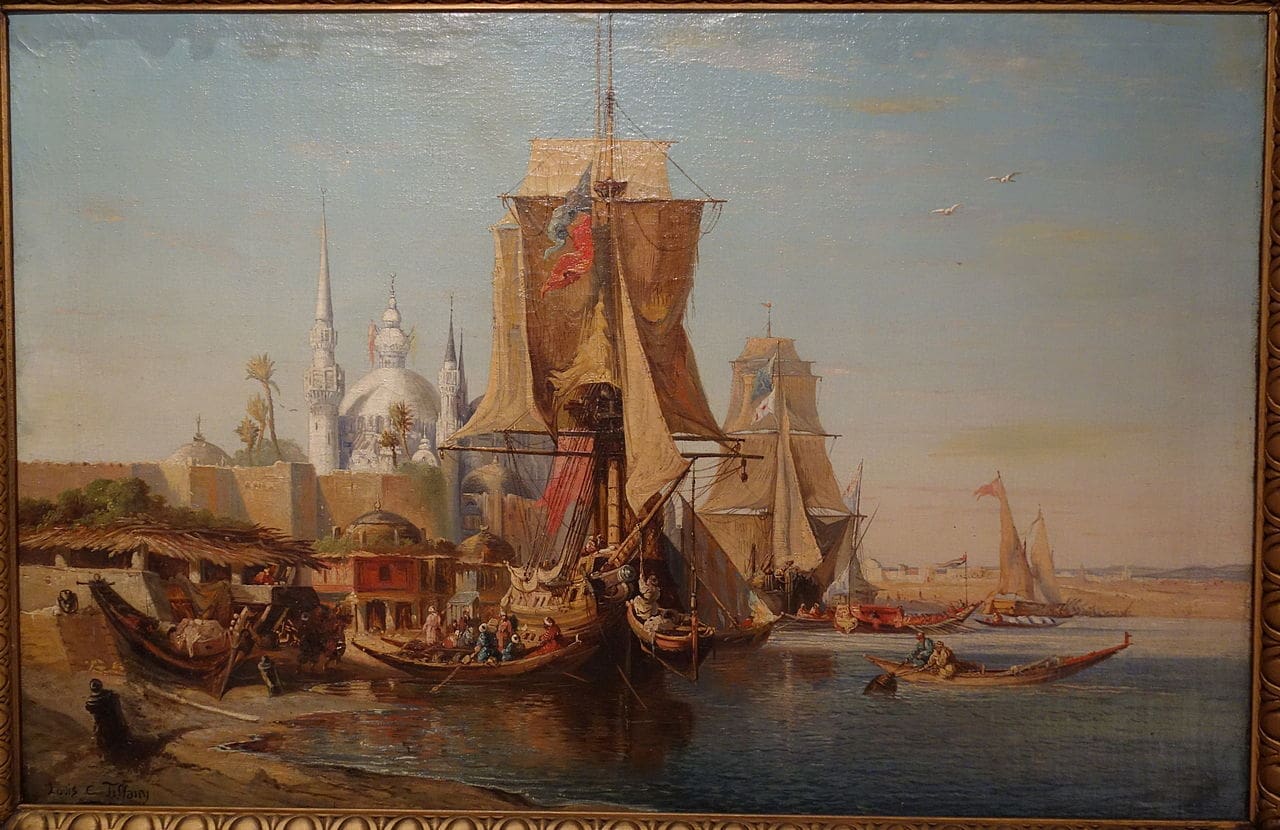
Louis Comfort Tiffany’s painting, Untitled (Bodrum, Turkey), captures the movement of ships in a harbor against a backdrop of domed architecture. Undated oil on canvas, part of the collection at the New Britain Museum of American Art.
“When I first had a chance to travel in the East and to paint where the people and the buildings are clad in beautiful hues, the pre-eminence of color in the world was brought forcibly to my attention.”
— Louis Comfort Tiffany
He set off across Europe, North Africa, and the Middle East—Tangier, Cairo, Constantinople, Venice—sketchbook in hand, absorbing the mosaics, the stained-glass domes, the intricate tilework, the ever-shifting light over the desert sands. These places, where color was woven into the very architecture of daily life, expanded his artistic vocabulary.
The Paintings: Impressionism Before Impressionism
Tiffany’s paintings from this period are looser, more atmospheric than his Hudson River School influences—less focused on precise details, more obsessed with the glow of light against a surface, the shimmer of color where sky meets water.
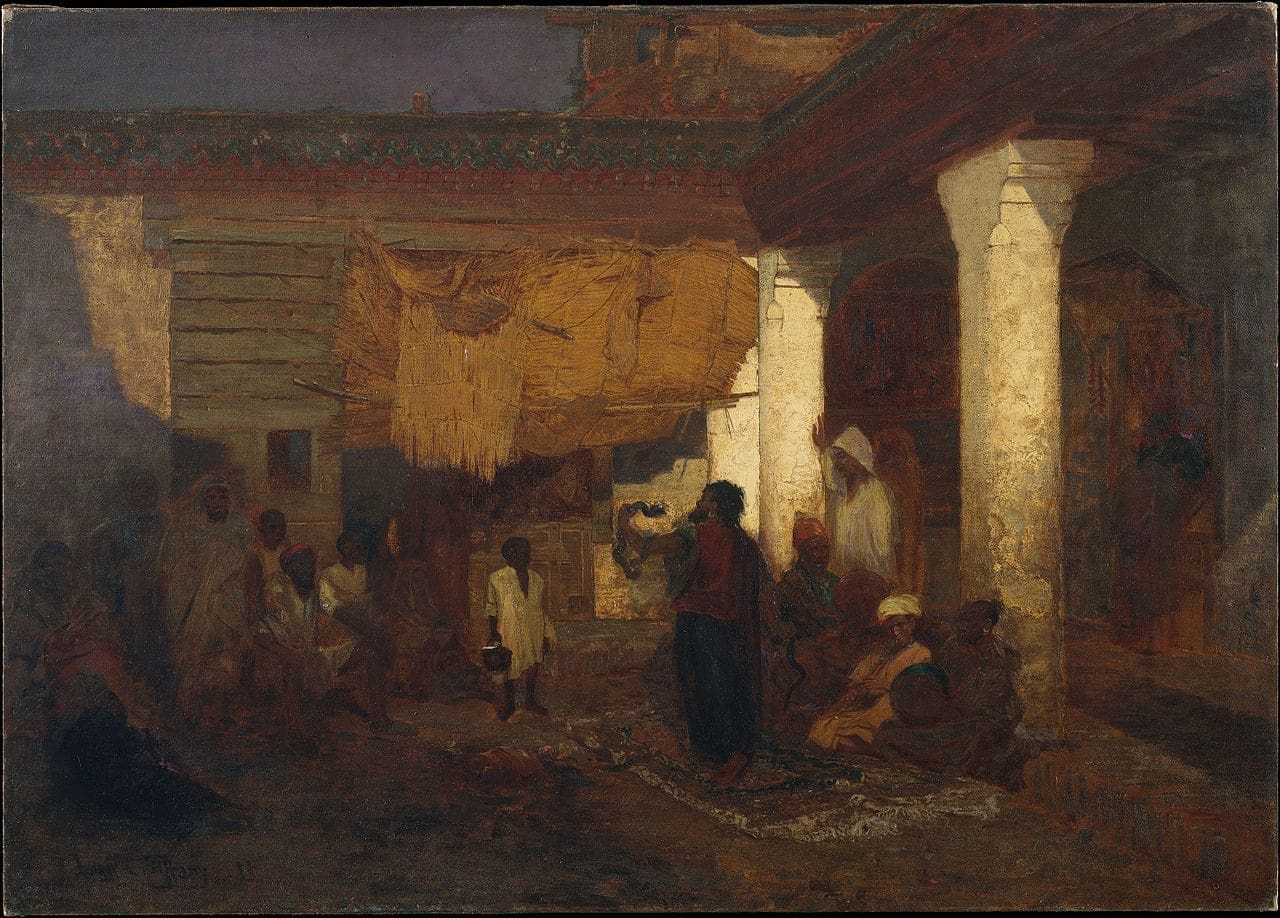
Louis Comfort Tiffany’s Snake Charmer at Tangier, Africa, a mesmerizing depiction of a Moroccan market scene where shadow and golden light dance across the canvas. Image via Wikimedia Commons, courtesy of The Metropolitan Museum of Art.
- “Snake Charmer at Tangier” (1870s) – One of his most famous paintings, capturing the mystery and movement of Morocco with swirling drapery, warm ochres, and intense contrasts between shadow and light.
- Venetian Canals at Dusk – The golden reflections of light on water, the way buildings seem to dissolve into the rippling canals.
- Market Scenes in Cairo and Algiers – Where jewel-toned fabrics and radiant sunbursts create a near-mystical glow, hinting at the opulence that would later define his glasswork.
His works during this period parallel the rise of French Impressionism, but unlike Monet and Renoir, Tiffany was interested in light as a permanent presence, something that could be captured, held, and intensified.
The Frustration of Paint: Searching for Something More
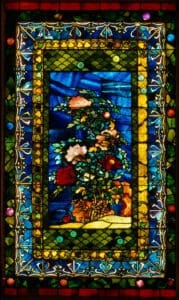
John La Farge’s masterpiece, Peonies Blown in the Wind (1880), a groundbreaking stained glass panel that helped redefine the medium with its rich layering and iridescent hues. Image via Wikimedia Commons, courtesy of The Metropolitan Museum of Art.
By the late 1870s, Louis Comfort Tiffany was at a crossroads. He had spent over a decade painting, traveling, and exhibiting his works, but something was missing.
No matter how much he experimented, paint alone couldn’t achieve what he truly yearned for—a medium that could capture light the way stained glass in a cathedral window could, shifting and transforming as the day passed. This realization was the catalyst. His obsession with light—first explored in oil on canvas—would soon push Louis Comfort Tiffany to break every rule of traditional stained glass and reinvent the art form entirely.
He began working with John La Farge, an innovator in opalescent glass, and within a few short years, Louis Comfort Tiffany had abandoned painting almost entirely, diving headfirst into the world of decorative arts, stained glass, and interior design. Though Tiffany left behind his career as a painter, his time with brush and canvas shaped everything he did in glass and interior design.
His mastery of color theory—developed in his travels and paintings—led to his layered glass technique, where multiple hues were fused to create depth, shadow, and painterly effects in his windows and lamps. His love for the glow of Venetian light and Moroccan markets led him to reject the dull, flat stained glass of the past and instead create glass that shimmered, flickered, and transformed with daylight.
His interest in composition and perspective—refined through years of landscape painting—allowed him to design stained glass windows that felt vast, immersive, and cinematic, like the luminous landscapes in his chapel windows and his most famous residential commissions. Even his interiors, from the Havemeyer House to the White House redesign under President Chester A. Arthur, were paintings come to life, filled with layers of color, gilded embellishments, and carefully curated lighting.
Louis Comfort Tiffany: The Interior Designer Who Painted with Light
If Louis Comfort Tiffany had stopped at painting, he would have left behind a legacy of color and atmosphere. If he had only worked in stained glass, he would still be remembered as one of America’s most visionary artists. But Tiffany was an orchestrator of entire spaces, a creative director and interior designer who believed that rooms should be immersive, living works of art.
Long before “experiential design” became a trend, Louis Comfort Tiffany was crafting environments where light, texture, and color wove together like a symphony, transforming interiors into artistic sanctuaries. His approach wasn’t merely for decoration, but was about creating an all-encompassing experience. From the White House to the Havemeyer Mansion, Tiffany’s interiors were places to be felt.
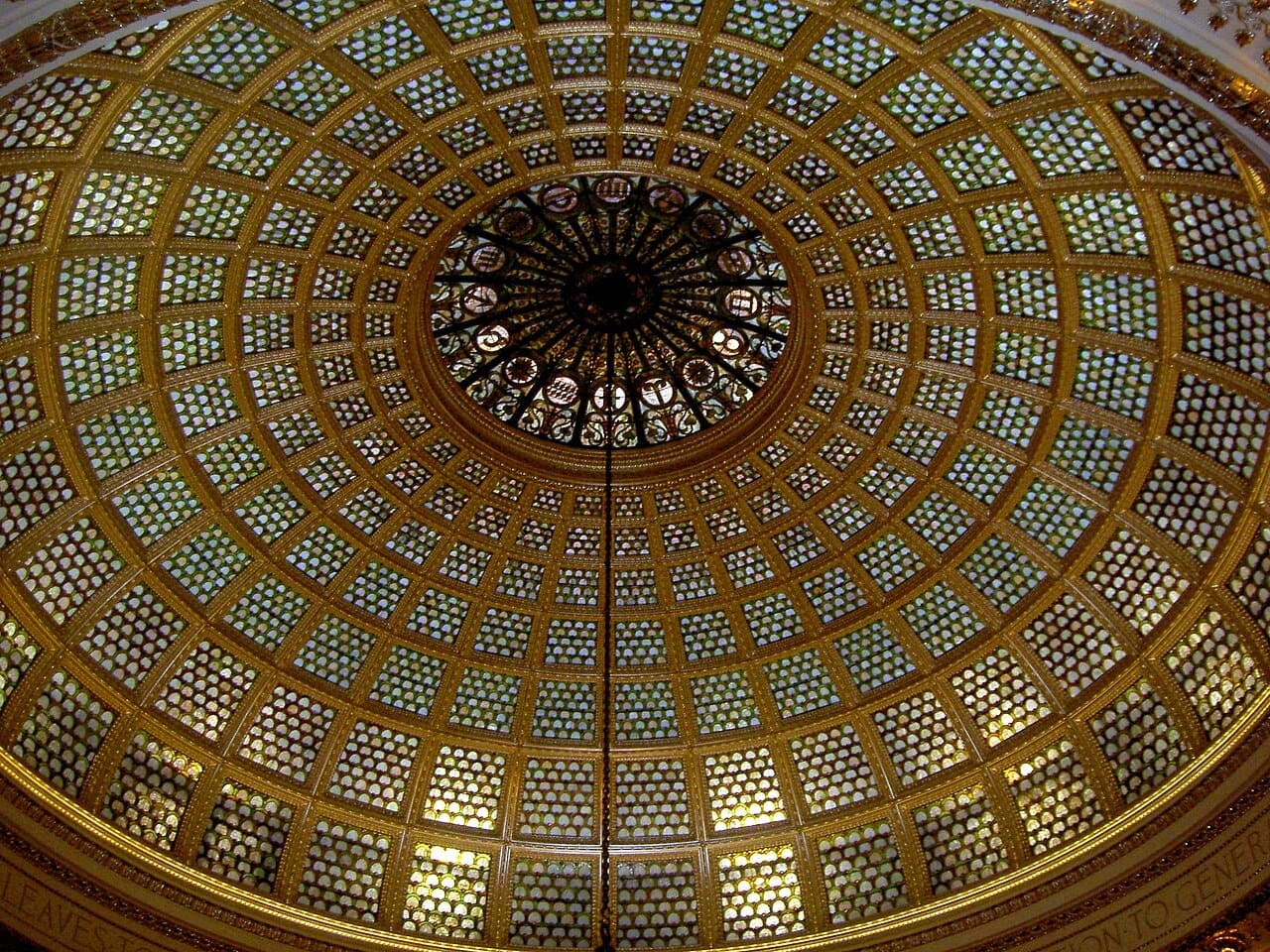
The breathtaking Tiffany Dome at the Chicago Cultural Center, a stunning work of stained glass brilliance by Louis Comfort Tiffany. Image via Wikimedia Commons.
A Philosophy of Space: More Than Decoration
Unlike many of his contemporaries, Tiffany didn’t see interior design as a secondary art form. Instead, he saw rooms as living canvases, where every detail—from the flicker of light against a mosaic to the iridescence of a lampshade—contributed to a larger artistic vision.
His interiors were characterized by:
- Vibrant color palettes that defied the muted tones of traditional Victorian interiors.
- Rich layering of textures, including stained glass, mosaic, metalwork, and hand-painted surfaces.
- Organic, nature-inspired forms, influenced by Art Nouveau and his love for floral and aquatic motifs.
- Innovative use of lighting, making glass fixtures an integral part of the ambiance.
Through his own design firm and later Tiffany Studios, he created some of the most ambitious interior spaces of the late 19th and early 20th centuries.
The White House Makeover: A Presidential Transformation
In 1882, President Chester A. Arthur enlisted Tiffany to redesign several rooms in the White House, believing that the Executive Mansion needed a more modern, artistic identity.
Tiffany’s boldest addition was the stained glass screen in the Entrance Hall, an enormous work that refracted sunlight into golden hues, transforming the entryway into a jewel-toned cathedral. The screen, composed of iridescent glass in peacock-feather motifs, acted as a partition between the vestibule and the East Room, bathing the interior in warm, ever-changing light.
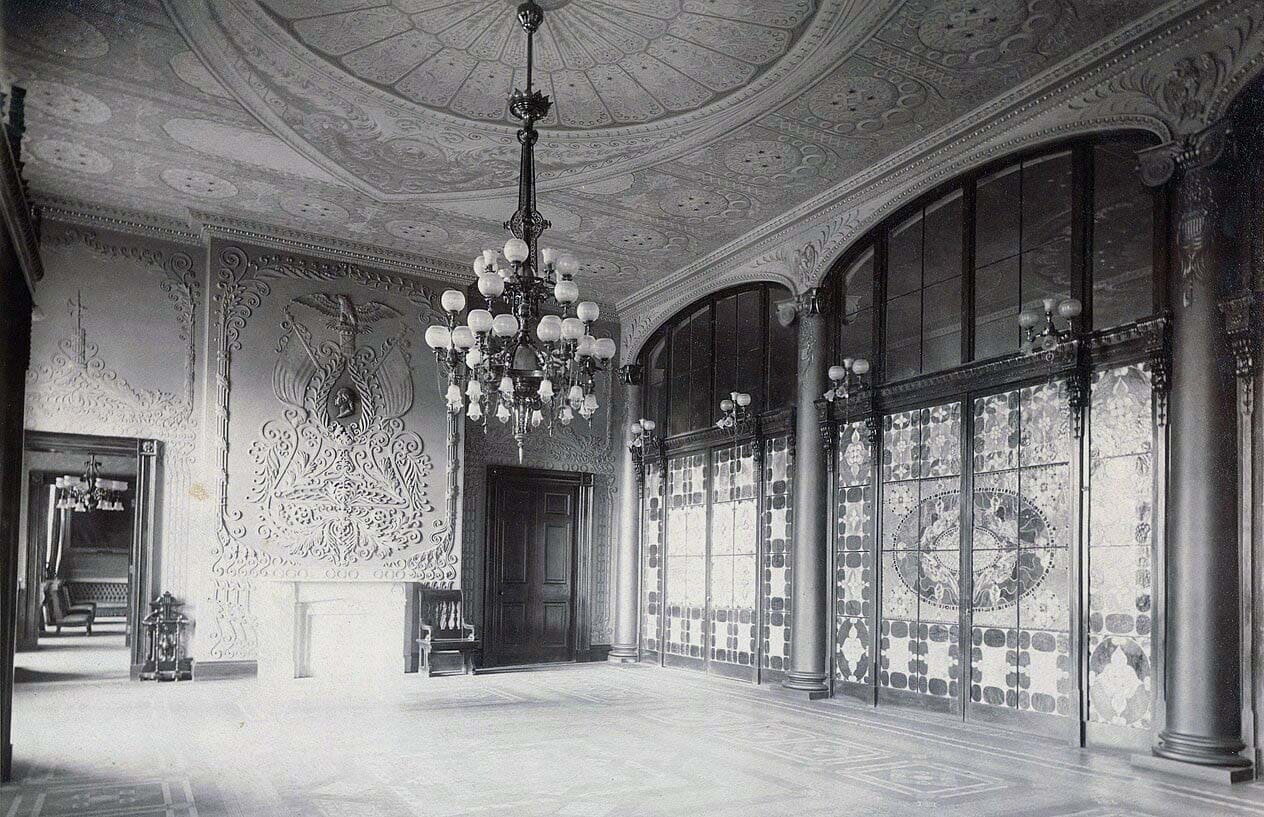
The White House North Entrance Hall as reimagined by Louis Comfort Tiffany in 1882, featuring an opulent stained glass screen that bathed the space in golden light. Image via Wikimedia Commons.
He also introduced:
- Elaborate glass and bronze gas fixtures, replacing outdated lighting with intricately designed chandeliers that illuminated rooms like celestial constellations.
- Rich, jewel-toned color schemes, moving away from classical whites and pastels toward deep ambers, blues, and reds that evoked Renaissance luxury.
- Hand-painted and stenciled ceiling murals, incorporating floral and naturalistic themes in a way that prefigured Art Nouveau aesthetics.
Despite the beauty of Tiffany’s work, it was removed during Theodore Roosevelt’s 1902 White House renovation, replaced with a more restrained, neoclassical style. While the stained glass screen was tragically lost, photographs and descriptions of the redesign endure, proving that Tiffany once had a hand in shaping America’s most iconic residence.
The Havemeyer Mansion: A Tiffany Masterpiece
If Tiffany’s White House renovations were a glimpse of his genius, the Havemeyer Mansion was his grandest interior design achievement. Commissioned by Henry and Louisine Havemeyer, one of America’s most influential art-collecting families, this New York City mansion became an all-encompassing Tiffany showcase.
The Havemeyers gave Tiffany complete artistic freedom, and he responded with some of his most audacious designs:
- A glowing Byzantine-inspired dining room, with walls encrusted in gold mosaic tiles that shimmered in candlelight.
- Ceilings painted in rich jewel tones, layered with decorative metalwork and textured plaster, evoking a Persian palace infused with Art Nouveau fluidity.
- Custom-designed furniture and textiles, ensuring that every single element in the space contributed to the overall aesthetic harmony.
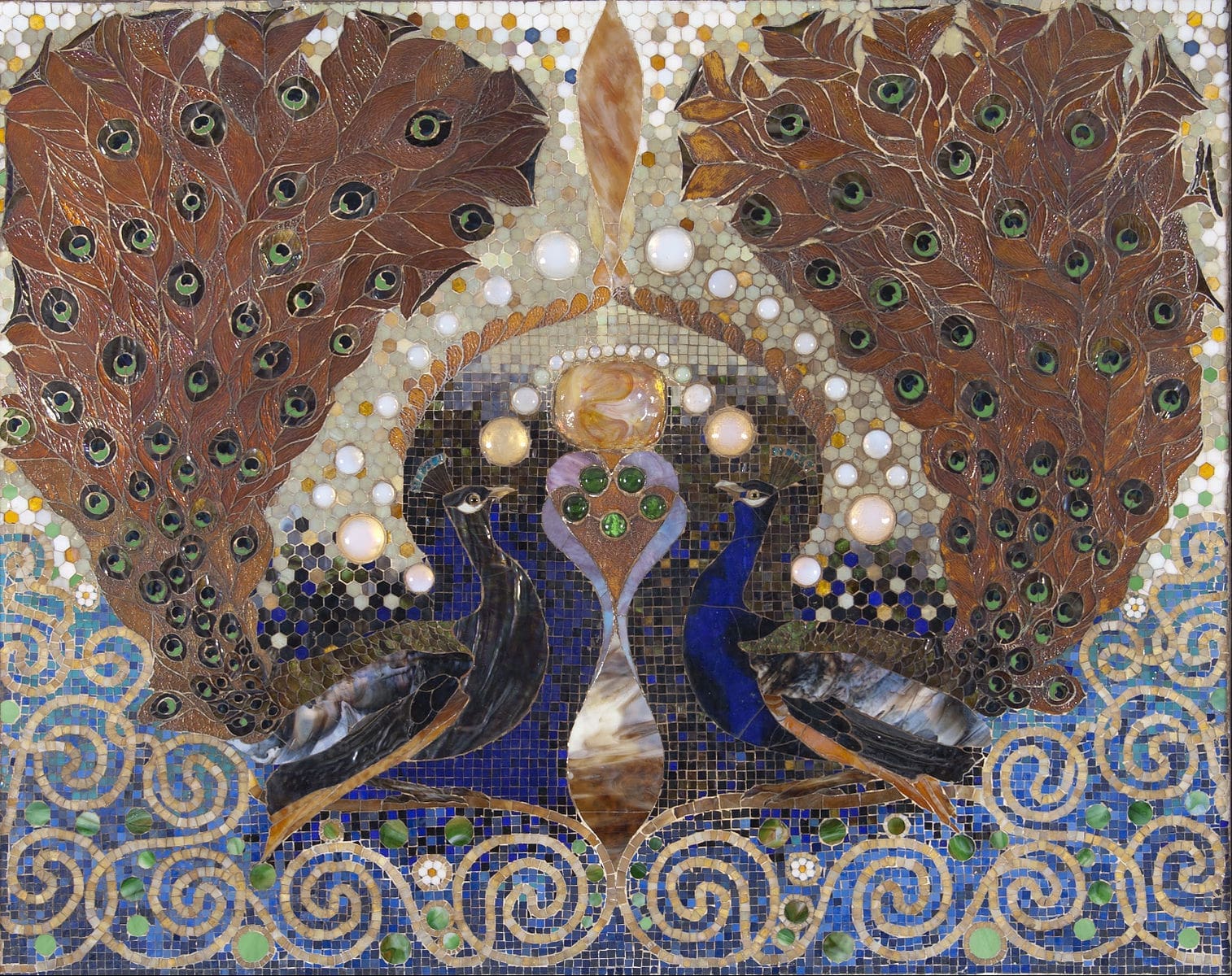
A masterpiece of glass and light—Louis Comfort Tiffany’s Peacock Mosaic, originally designed for the entrance hall of the Henry O. Havemeyer House. A radiant testament to Tiffany’s unparalleled artistry. Image via Wikimedia Commons.
The mansion, completed in the late 1890s, became a landmark of Tiffany’s interior philosophy, proving that design could be an immersive, three-dimensional work of art. Though the house was demolished in 1930, elements of Tiffany’s interiors were salvaged and now reside in the Metropolitan Museum of Art.
A Legacy That Still Glows
Though many of Tiffany’s grand interiors have been lost to time—demolished mansions, renovated buildings, forgotten rooms—his vision endures.
- The White House renovation may be gone, but its influence on the use of stained glass in American interiors is undeniable.
- The Havemeyer Mansion is no more, but its surviving decorative elements in the Metropolitan Museum of Art remind us of Tiffany’s ability to craft living environments of opulence and wonder.
- Tiffany Studios forever changed the relationship between lighting, space, and emotion, influencing designers long after his time.
Louis Comfort Tiffany’s interiors were about experience, about transforming rooms into sanctuaries of beauty and light. Even today, when we enter a space where color, texture, and light work in harmony, we are stepping into a world Louis Comfort Tiffany imagined long ago.
The Women of Tiffany Studios: Nurturing Talent Under Restrictive Rules
Though Louis Comfort Tiffany was hailed as the visionary behind every glittering lamp or stained glass window, he did not work alone. In the 1890s, he established a Women’s Glass Cutting Department, offering roles to talented female artists—positions unheard of in many other workshops of the day. Tiffany recognized that women had an exceptional eye for color and detail, and he insisted on paying them a fair wage comparable to their male counterparts. It was a radical move for the era, and his studio quickly became a place where female designers could excel—at least, until marriage entered the picture.
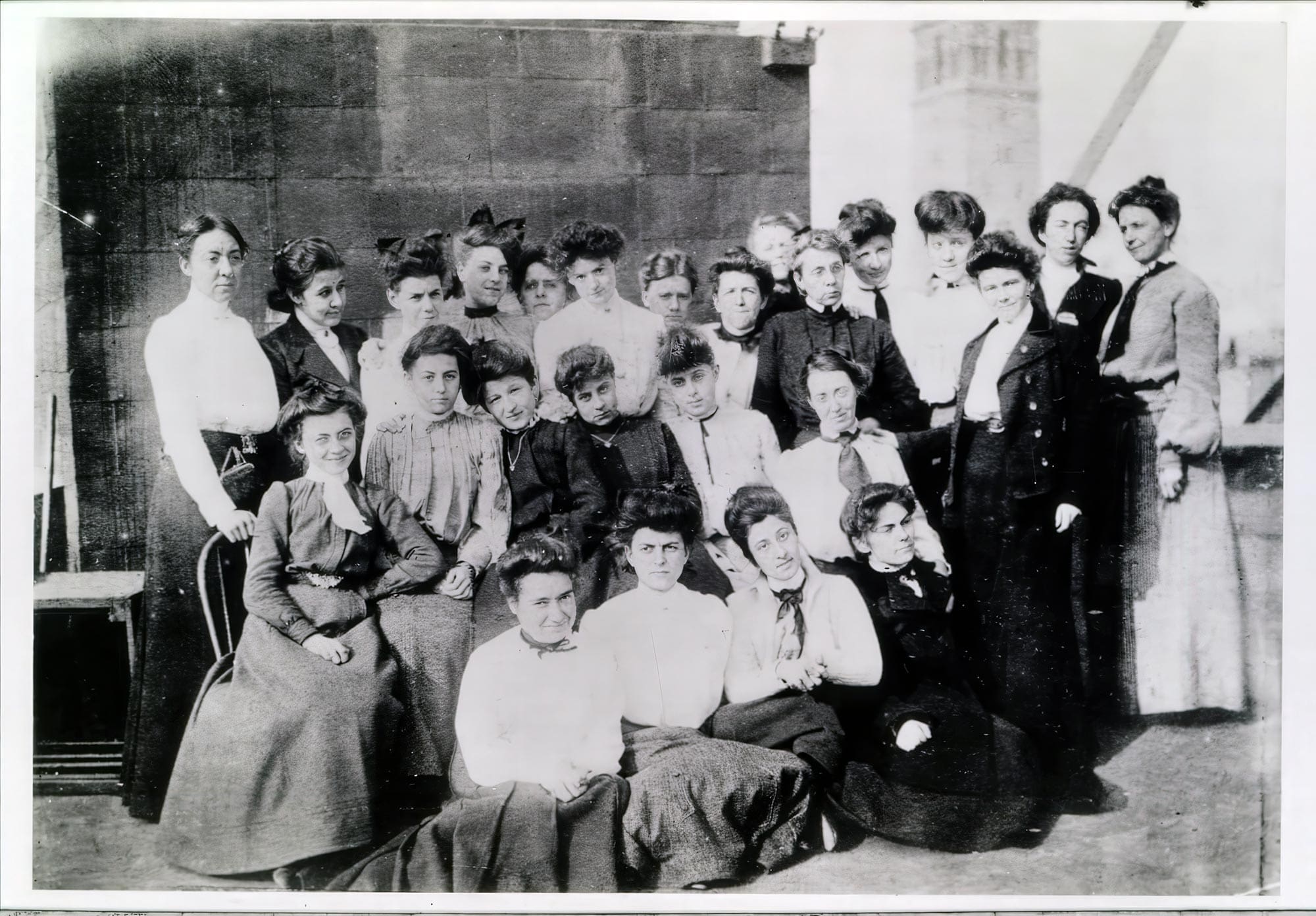
A rare gathering of Clara Driscoll and fellow “Tiffany Girls” on the roof of Tiffany Studios, circa 1904. Photo courtesy of The Charles Hosmer Morse Museum of Art.
In a perplexing twist for someone otherwise seen as forward-thinking, Tiffany barred married women from working at his studio. If a “Tiffany Girl” announced her engagement, she was required to resign. This policy forced talented designers like Clara Driscoll to leave, sometimes more than once, only to return when circumstances changed. Others, such as Agnes Northrop, never married and remained fixtures in the studio for decades. Despite these constraints, the women—eventually dubbed the “Tiffany Girls”—poured their creativity into Tiffany’s projects, selecting glass shards, cutting intricate patterns, and even revising his sketches to improve final designs. In many cases, their ideas shaped some of Tiffany’s most iconic creations.
History largely overlooked their contributions, applauding “Tiffany” as a single figure. Only now, through archives and letters, are these women receiving due credit. Louis Comfort Tiffany, for his part, undeniably championed female artisans in a time when few did, giving them a path to sustain themselves financially through art. Yet his contradictory no-marriage rule underscores the complexities of his role as both a pioneering employer of women and a guardian of traditional societal norms. In any case, Tiffany’s vision of art demanded teamwork, and the Tiffany Girls offered the skill and ingenuity that made his name shine.
By the early 20th century, Tiffany’s world began to change. Art Nouveau’s fluid lines gave way to the bold geometry of Art Deco. The Great Depression loomed. Tiffany Studios faced mounting financial strain, and in 1932, the company declared bankruptcy. Louis Comfort Tiffany passed away a year later, in 1933—an era of color and craft seemingly coming to a close.
For a time, Tiffany’s ornate lamps and windows fell out of vogue. Mosaics were pried from walls; stained glass panels were discarded or sold off. Laurelton Hall, once a beacon of opulence, lay abandoned until fire ravaged it. For a moment, it seemed the ember of Tiffany’s rebellion had died with him.
The Radiance That Endures
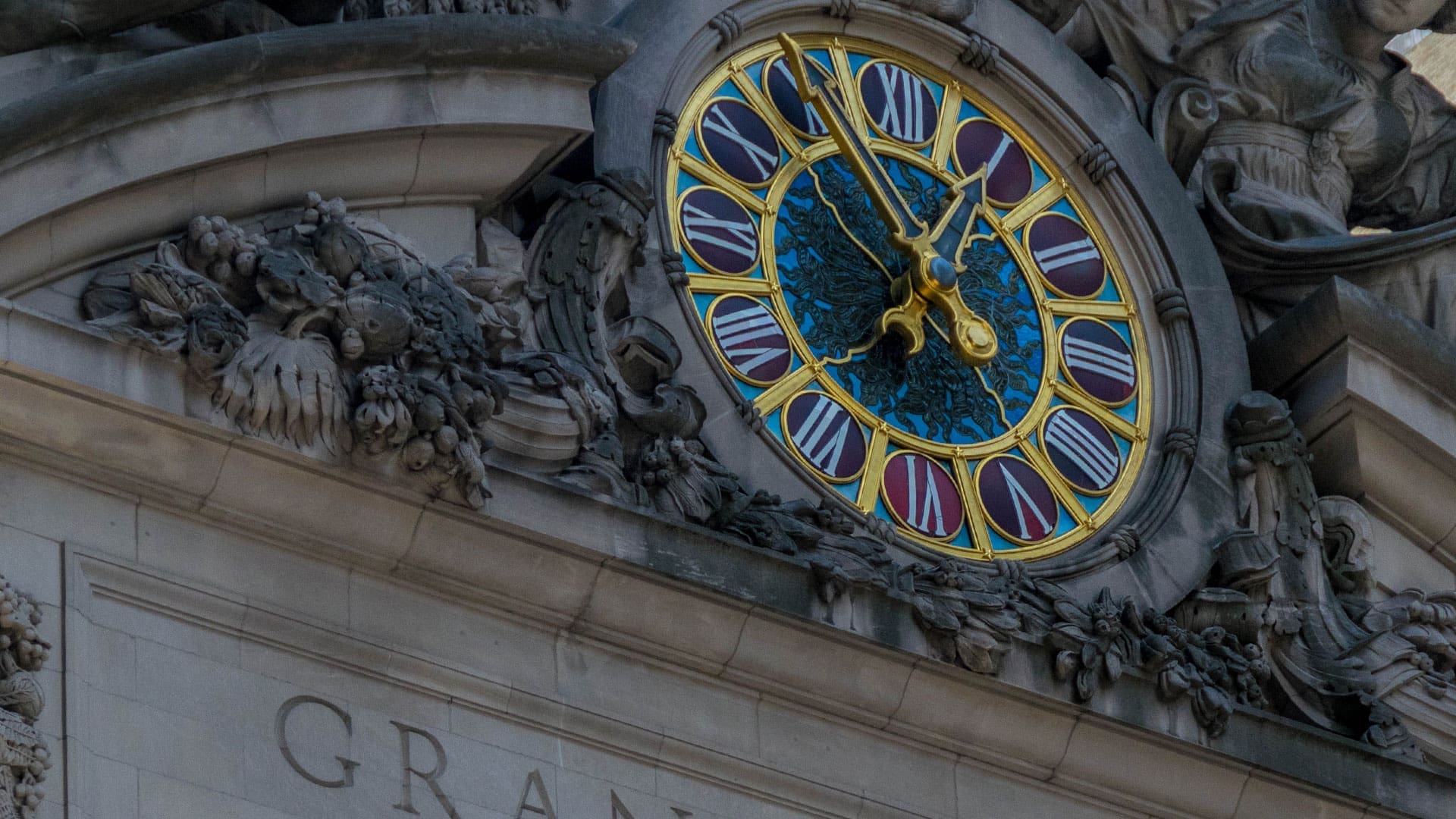
A close-up view of Grand Central Terminal’s so-called “Tiffany” clock, revealing its intricate glass face and gilded numerals. Original image via Wikimedia Commons; cropped for detail.
Yet true beauty has a way of rebirthing itself. By mid-century, collectors and museums resurrected Tiffany’s works, recognizing that his genius transcended trends. Today, Grand Central Terminal’s Tiffany clock still glows over 42nd Street, a silent testament to his artistry. The Metropolitan Museum of Art displays his windows in galleries where sunlight coaxes every hue into full bloom. And in the Morse Museum, fragments of Laurelton Hall stand like sacred relics, embodying the dream Tiffany hoped to share.
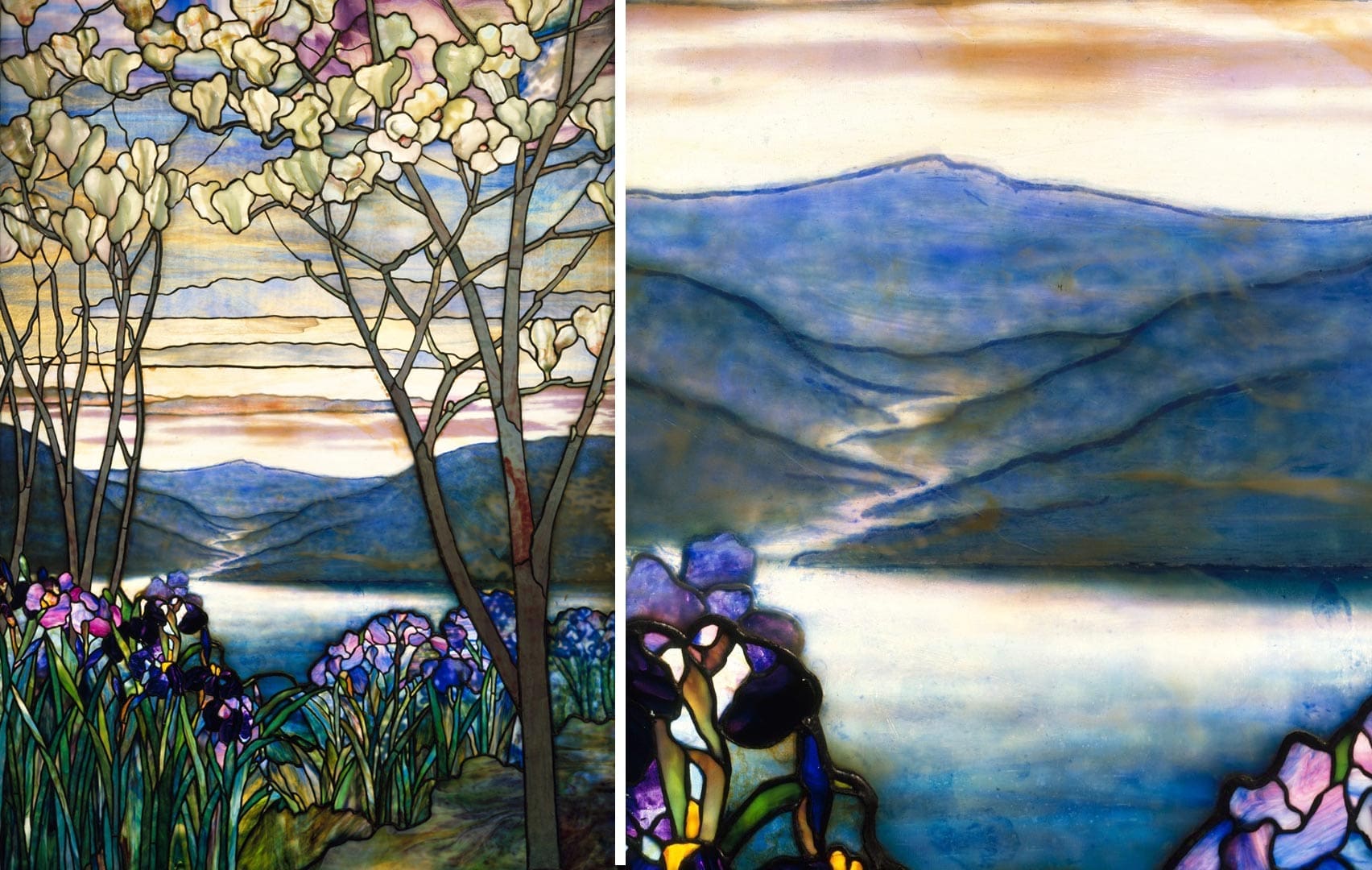
A combined view of Tiffany Studios’ “Magnolias and Irises” stained glass window (left) and a close-up of its lustrous opalescent landscape (right). Image via Wikimedia Commons.
We walk past those lamps in darkened galleries, watch the light refract into our memories, and feel an echo of Tiffany’s original vision: to remind us that beauty is everywhere, if we care to look. That is his lasting gift—an insistence that color and light can lift our spirits, that even the ordinary bulb might become a beacon of enchantment. In recent decades, renewed scholarship has even shone light on the Tiffany Girls, the women who once labored in obscurity, finally granting them a rightful place in this story of brilliance.
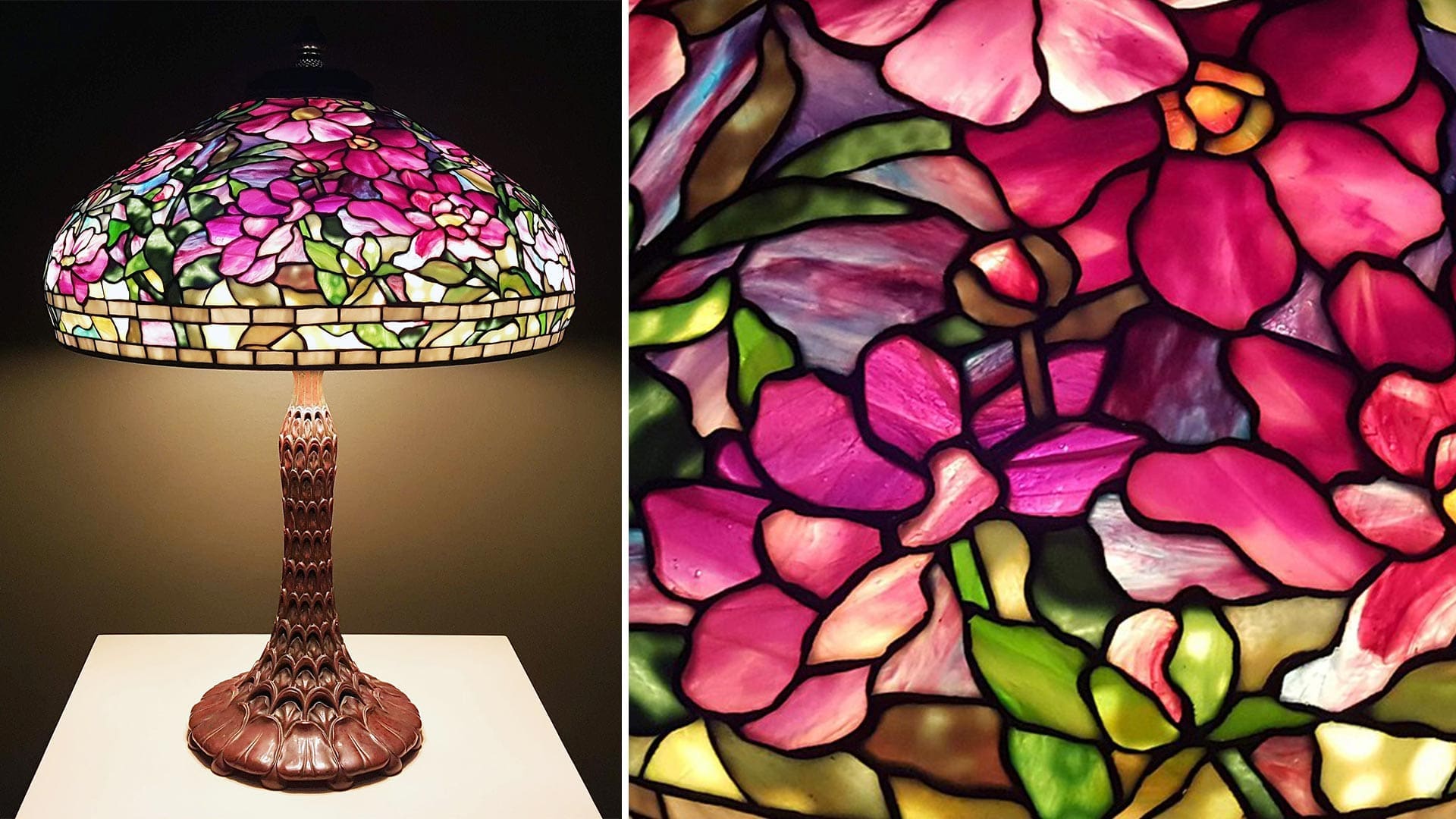
A stunning close-up of the Peony table lamp by Tiffany Studios, its pink blossoms aglow in opalescent glass. Image via Wikimedia Commons.
A Final Reflection on Light and Legacy
So here we stand, more than a century after Louis Comfort Tiffany first rose to fame, still entranced by the art he set ablaze in glass and metal. Why? Because in every swirling window, in every luminous lamp, Tiffany invites us to see the world through his eyes—where color unfurls like a secret language, and light itself takes on a life of its own. He showed us that art need not remain in gilded halls; it can blossom in the warm glow of a tabletop lamp, the shimmer of a chapel’s mosaic dome, or even the gleam of a bejeweled pendant.
From the Medusa pendant’s jellyfish mystique to the kaleidoscopic brilliance of his Favrile glass, Tiffany’s imprint on American culture still resonates with a quiet power. His rebellion against the mundane is an open invitation to us all: let the world be your canvas, let the sun’s rays be your paint, and never stop believing in the alchemy of beauty. As long as light can pass through glass—refracting new hues onto the walls of our everyday lives—Tiffany’s spirit will remain a guiding force, a living story of color and possibility.
If you’re ready to infuse your own projects with that boundary-pushing spirit—where creativity and innovation meet beauty in unexpected ways—reach out. We’re deeply inspired by Louis Comfort Tiffany’s fearless artistry, and we’d love to help you bring your boldest visions to life.

